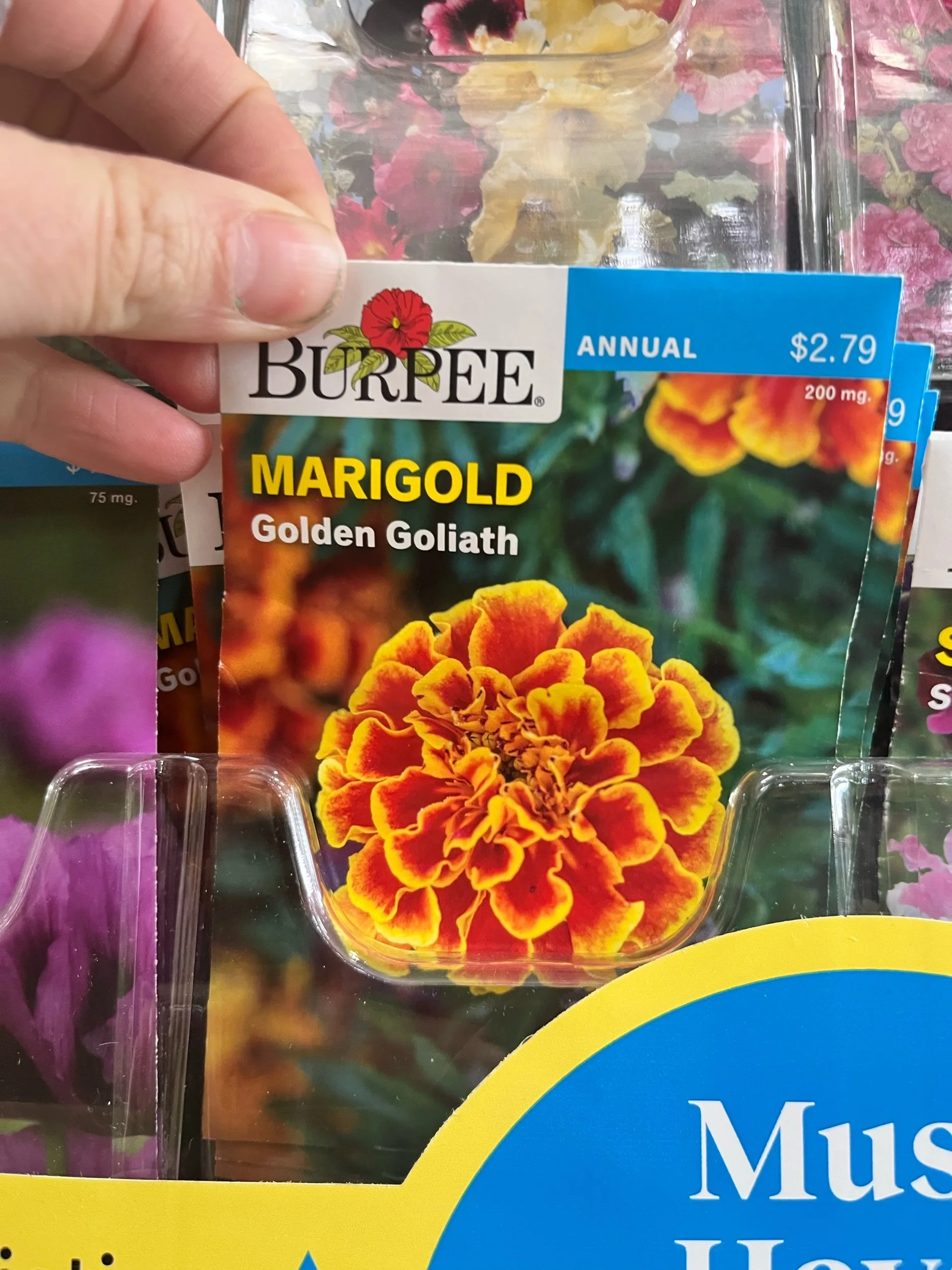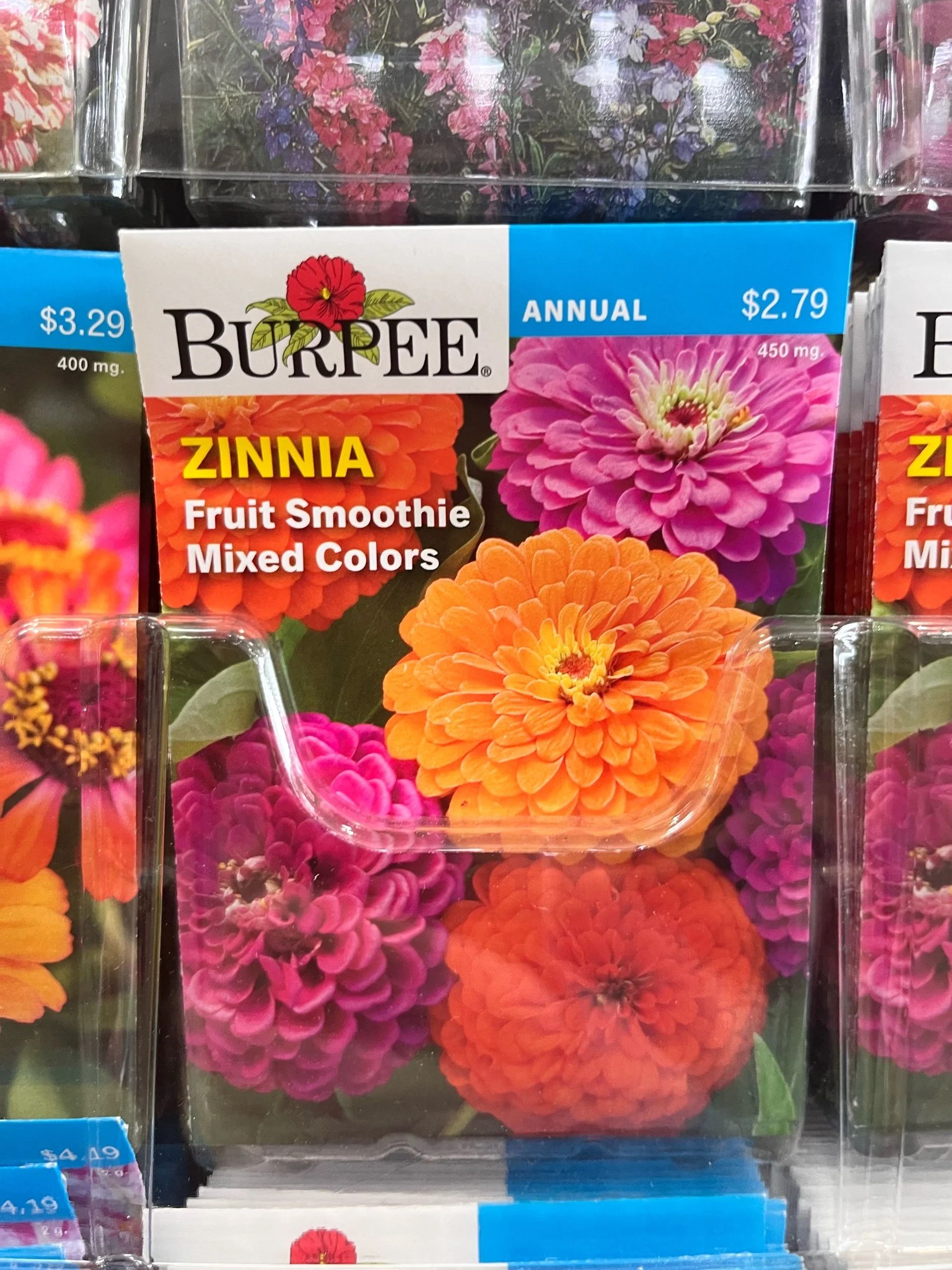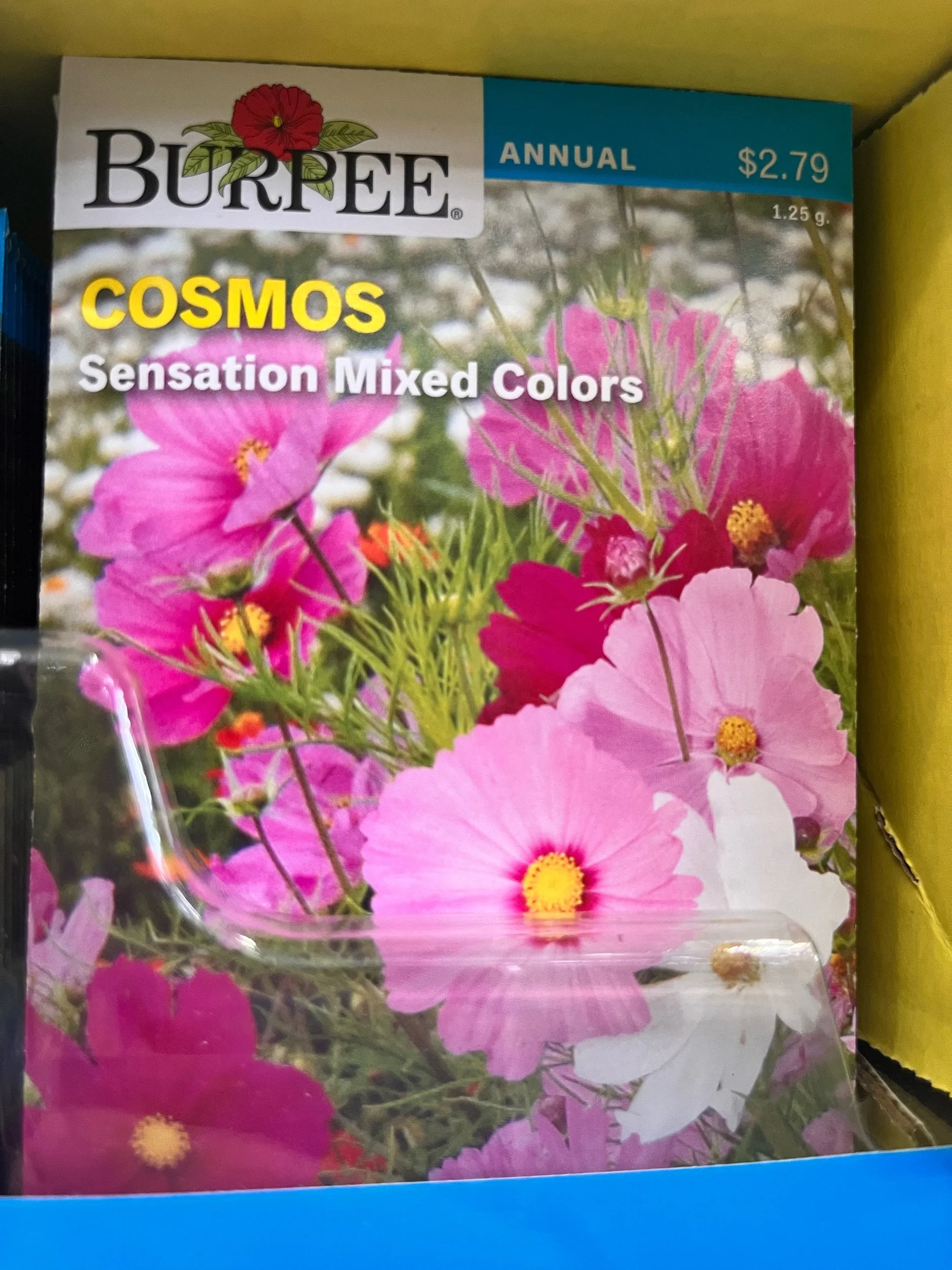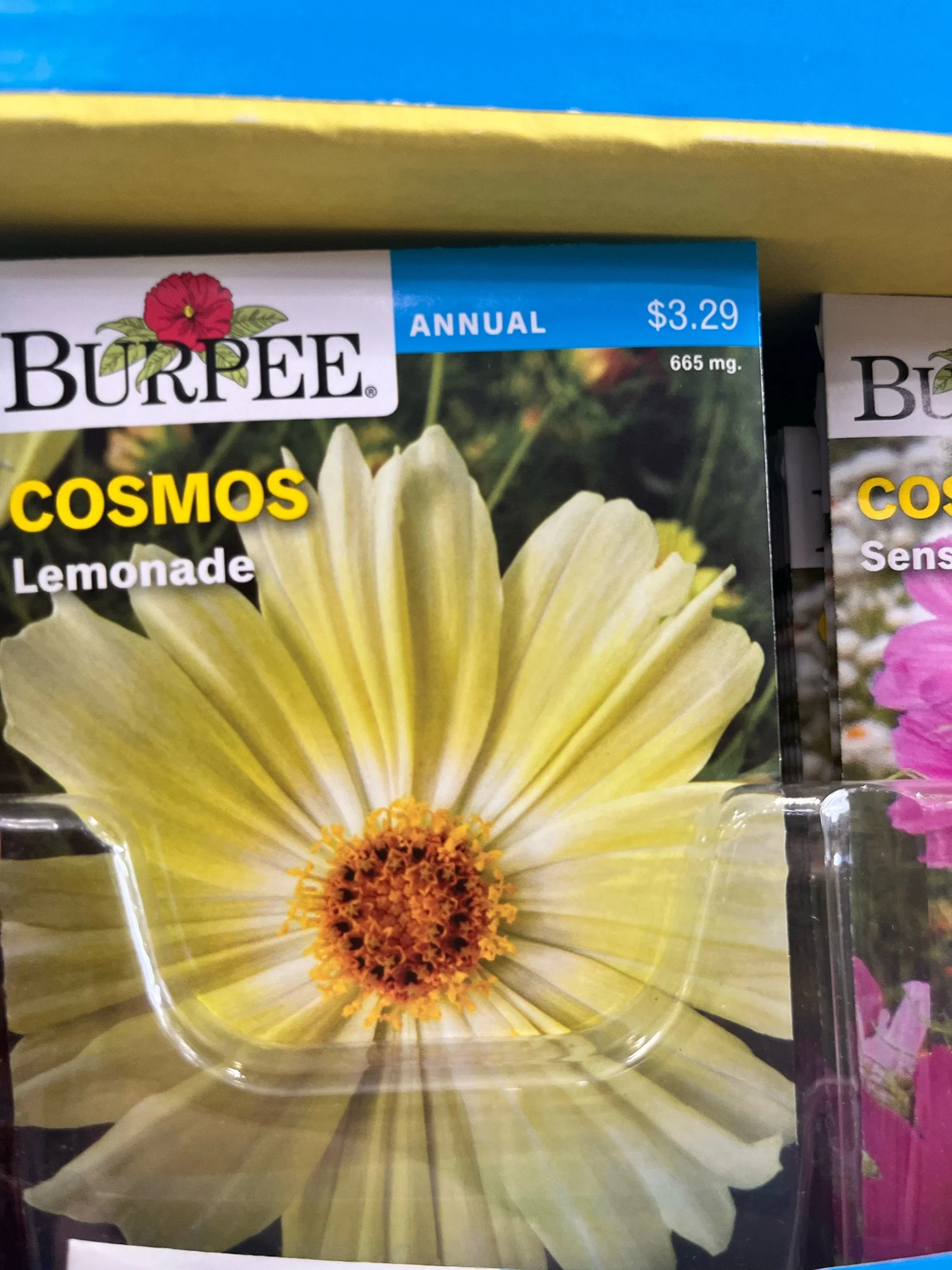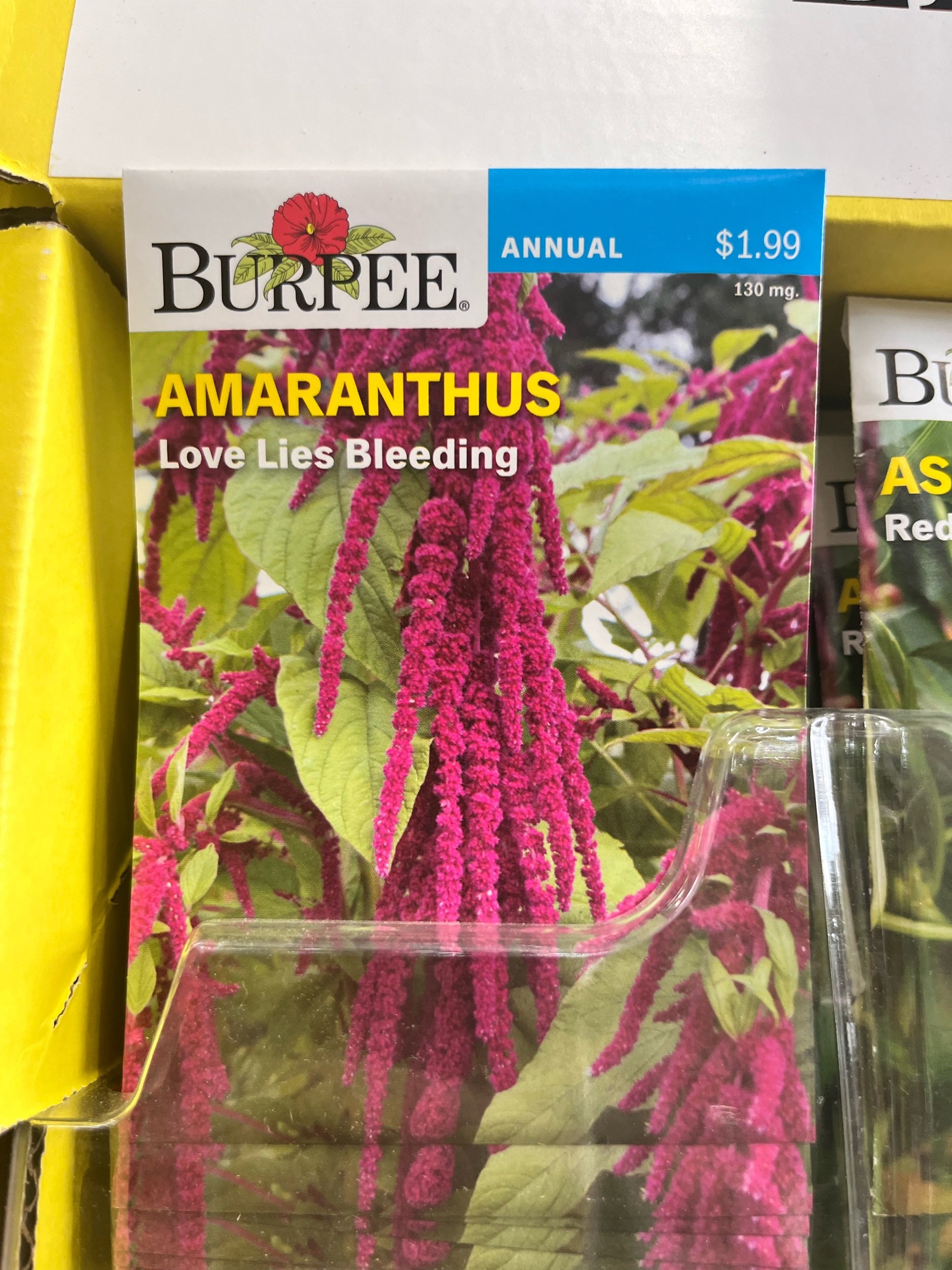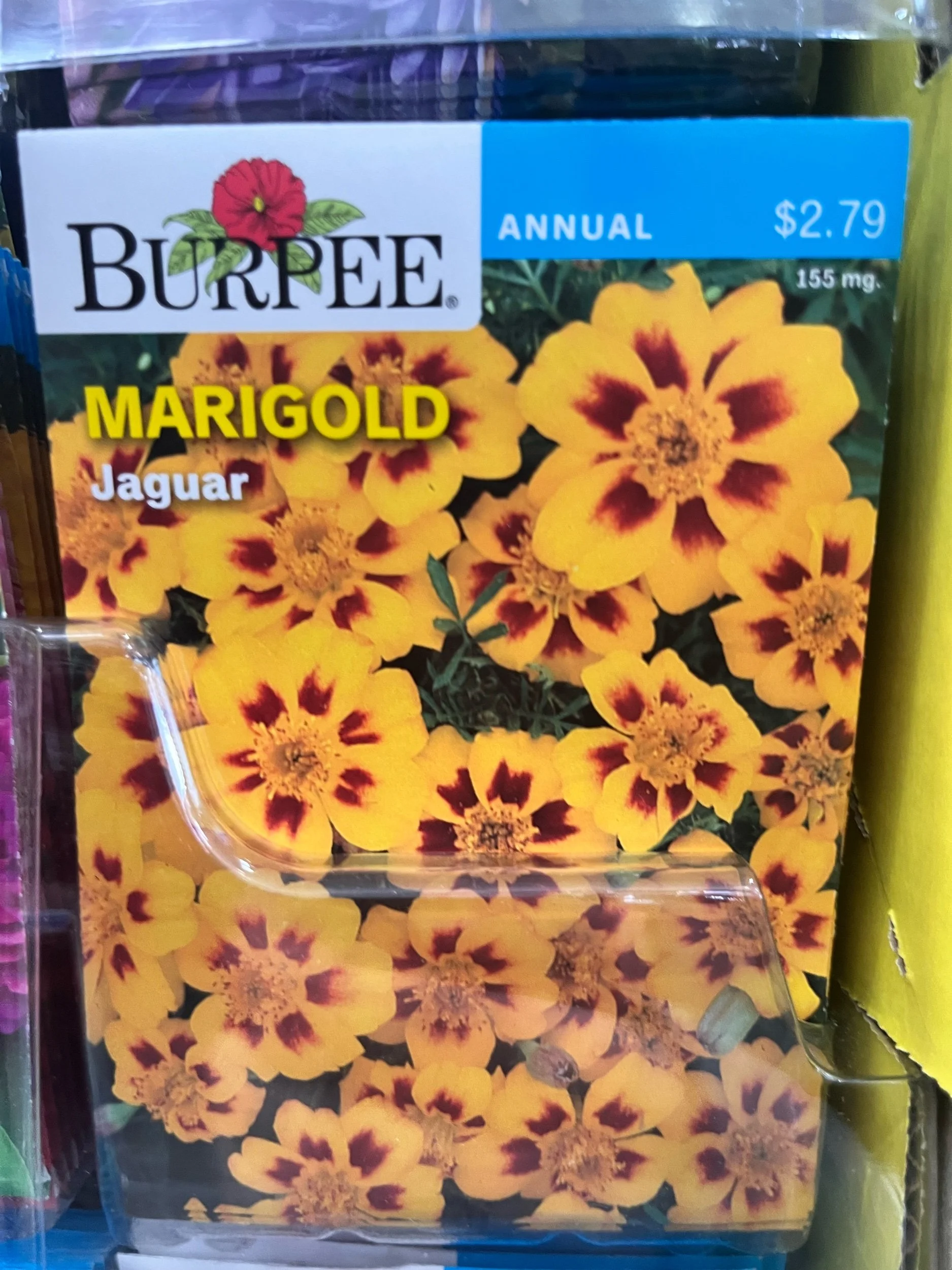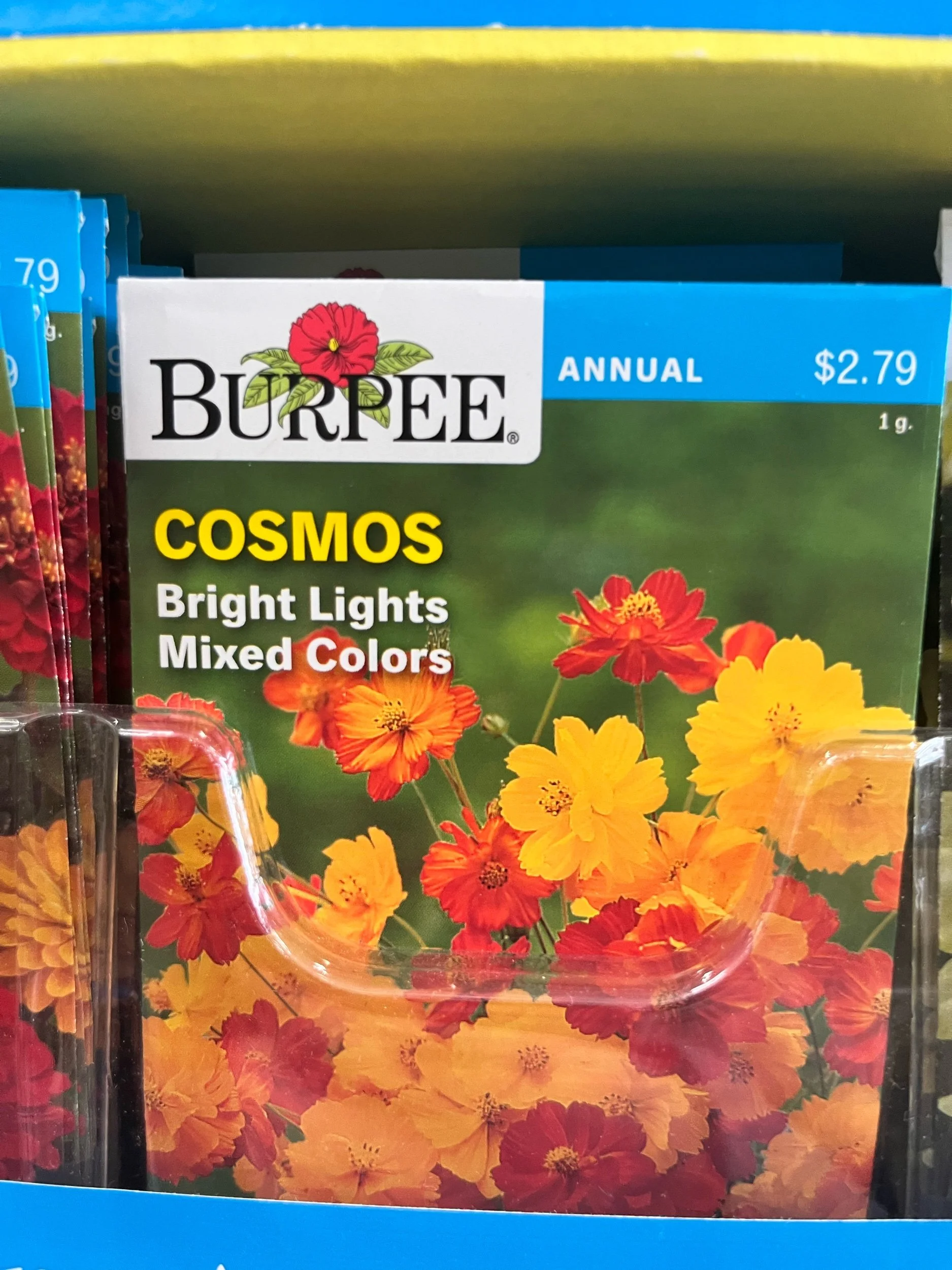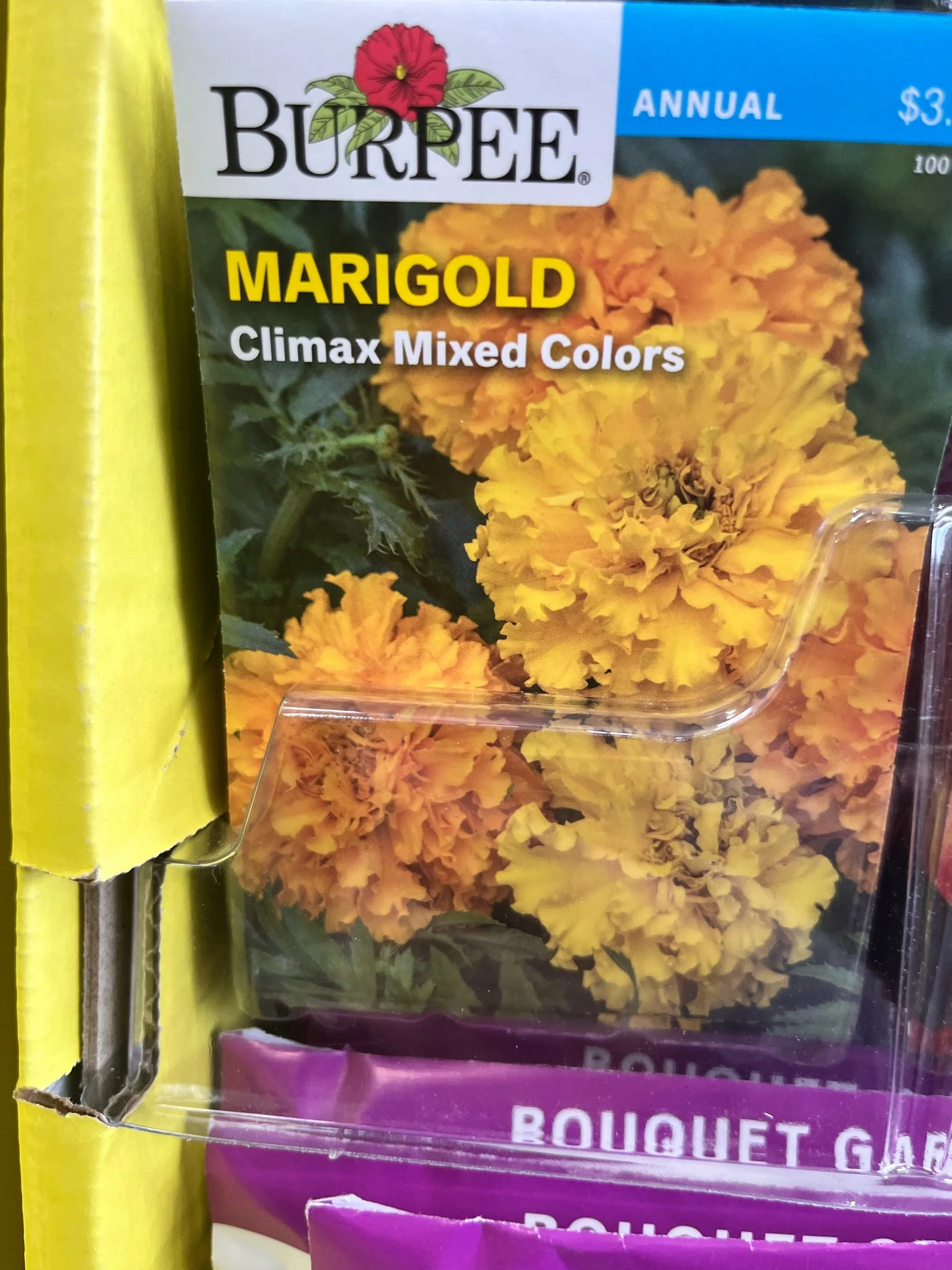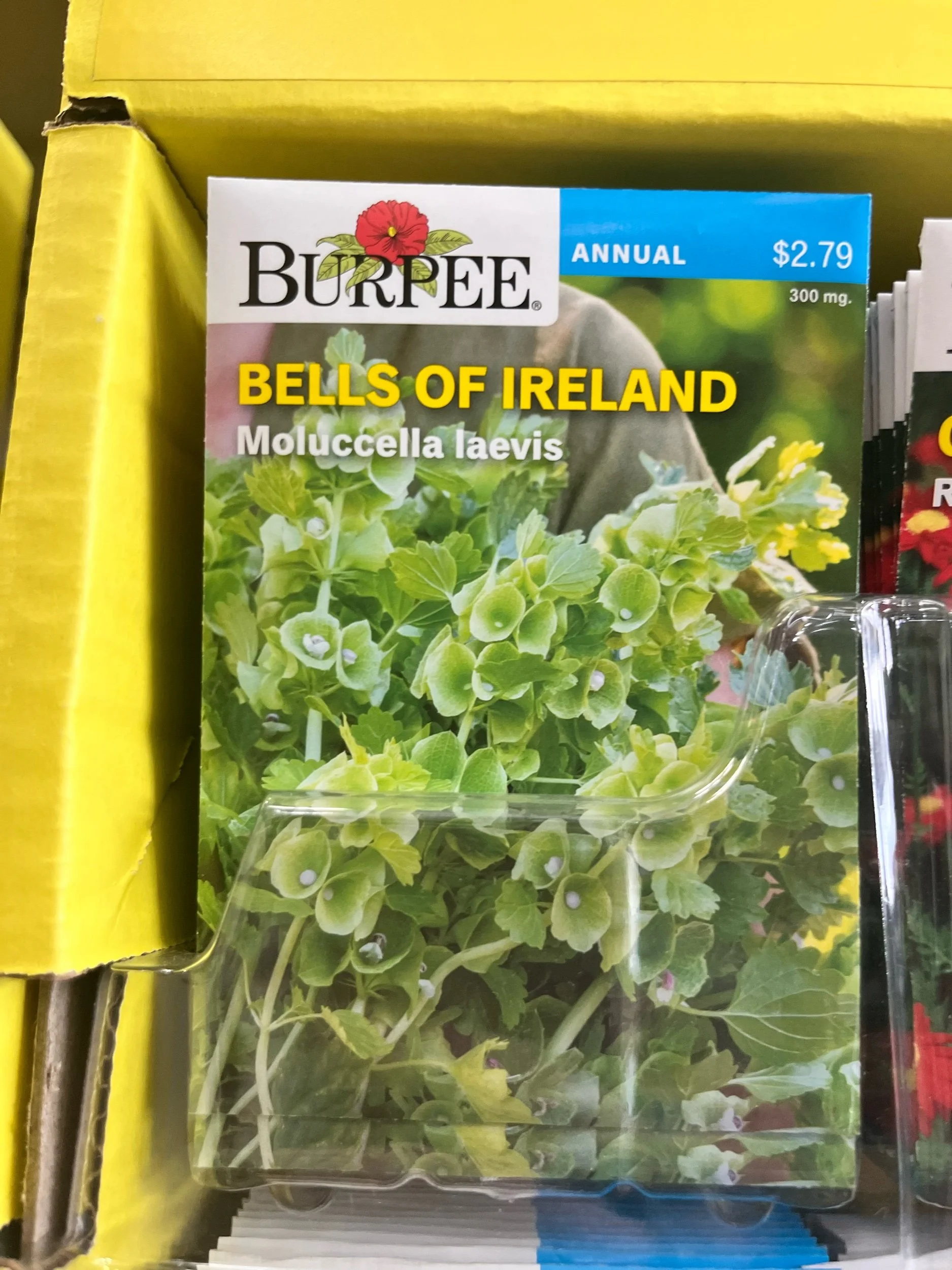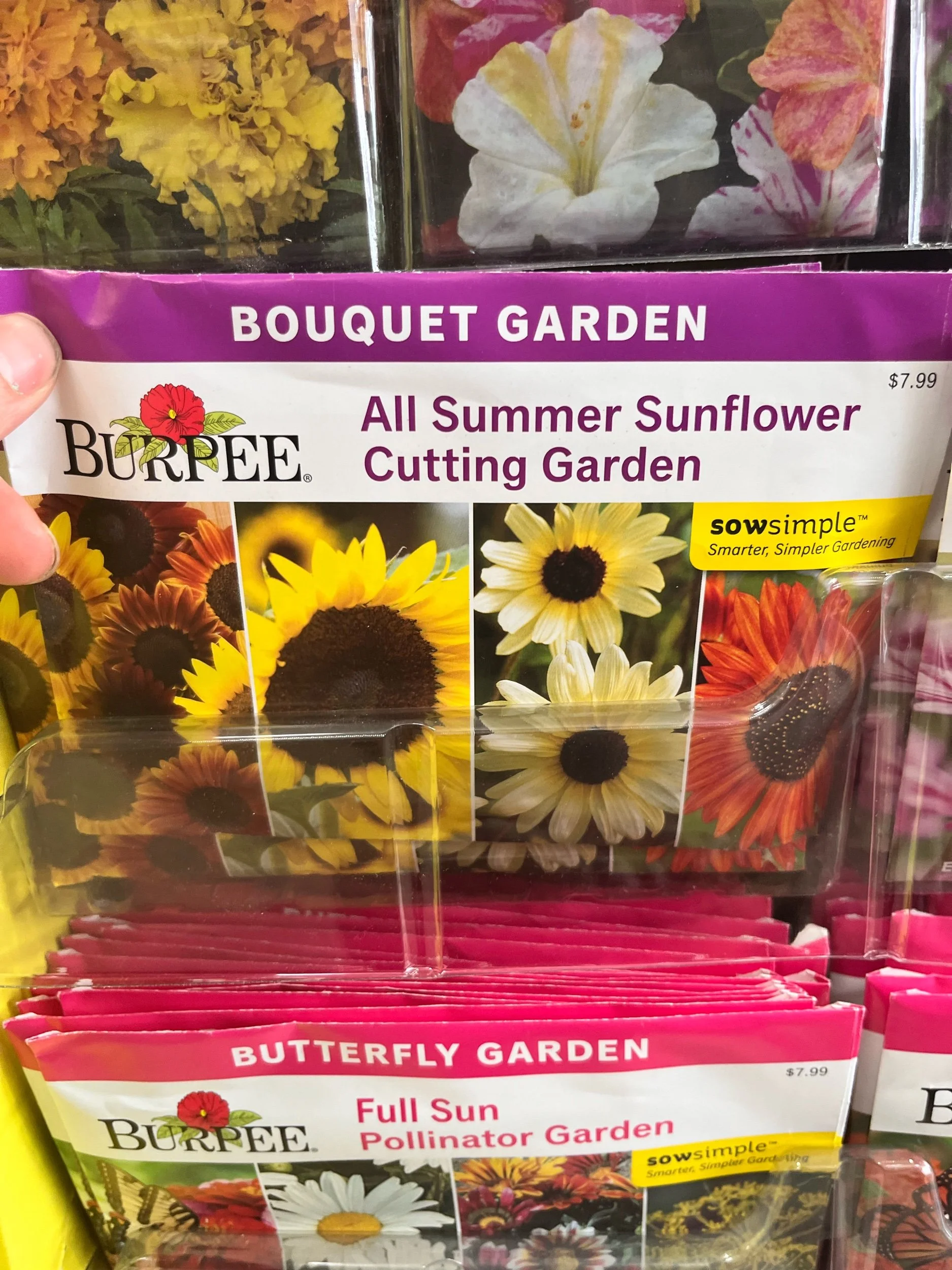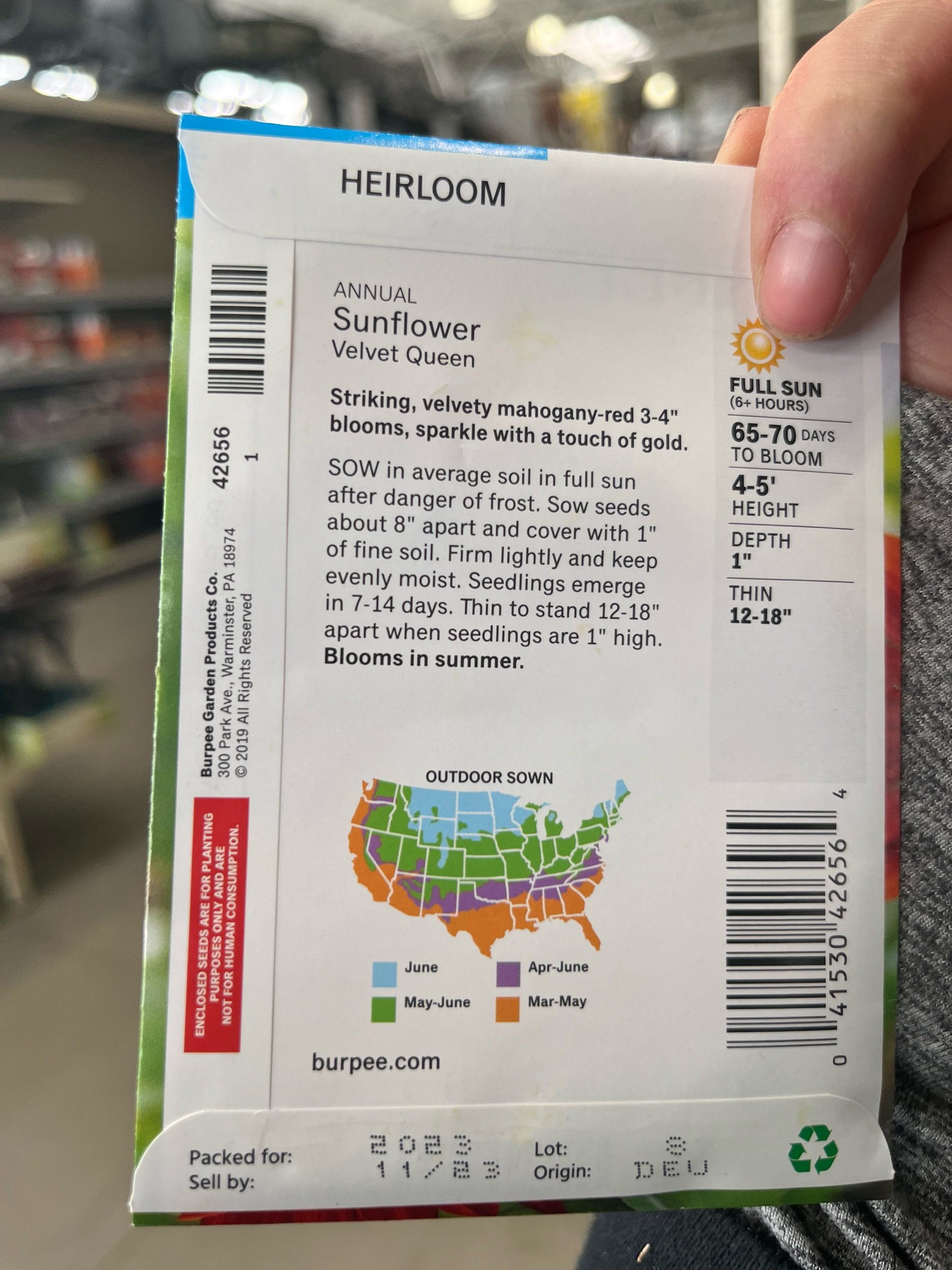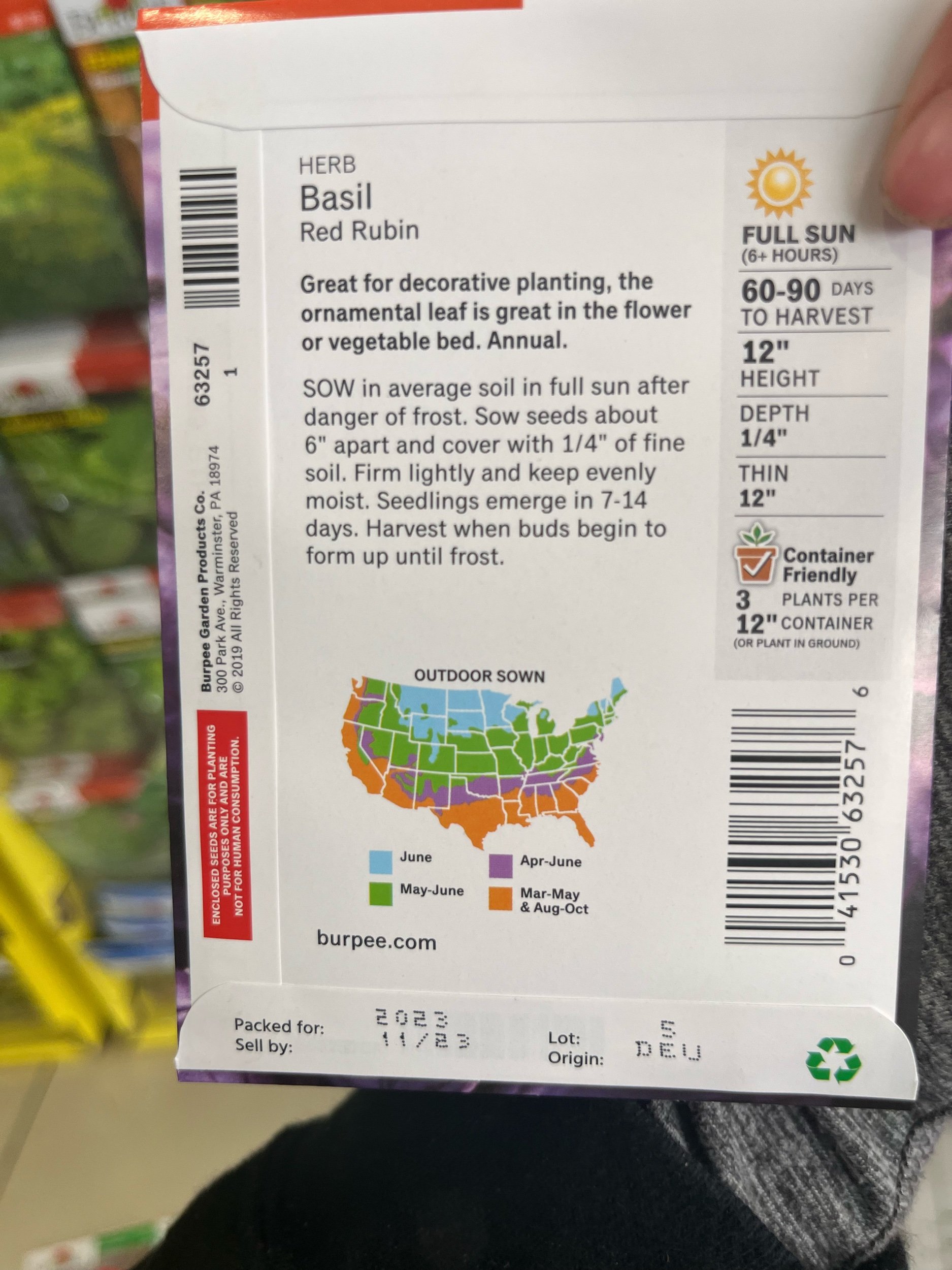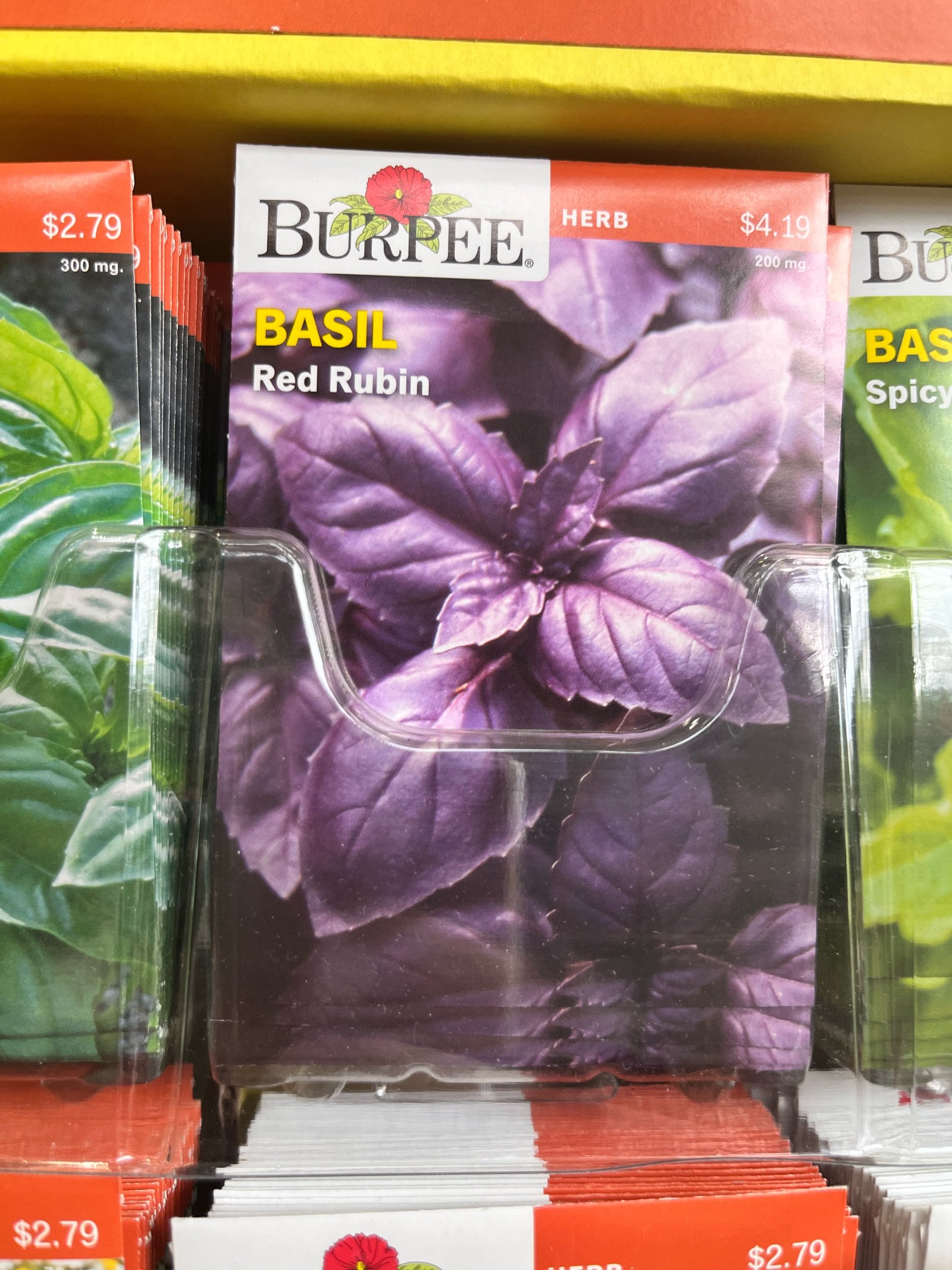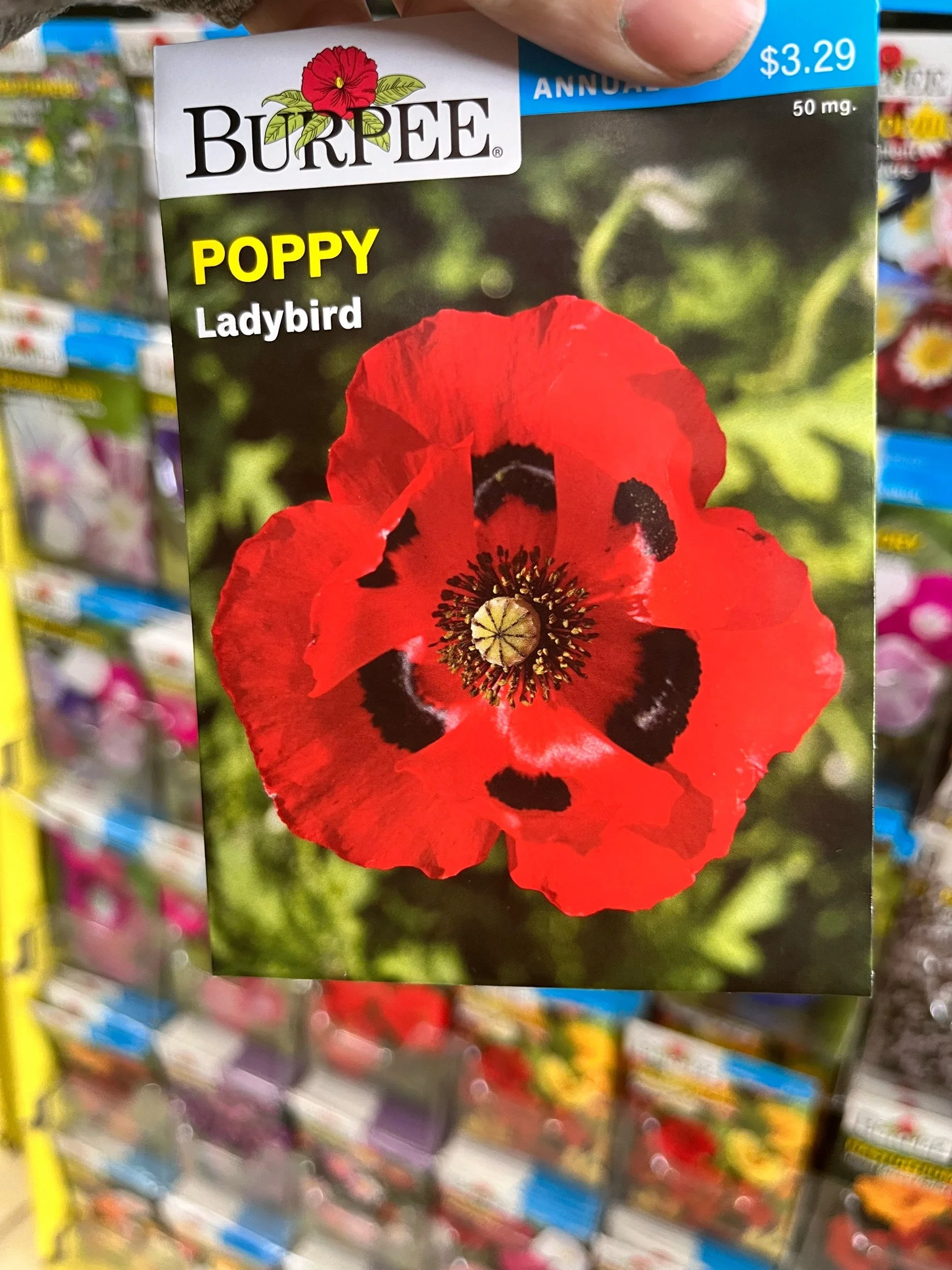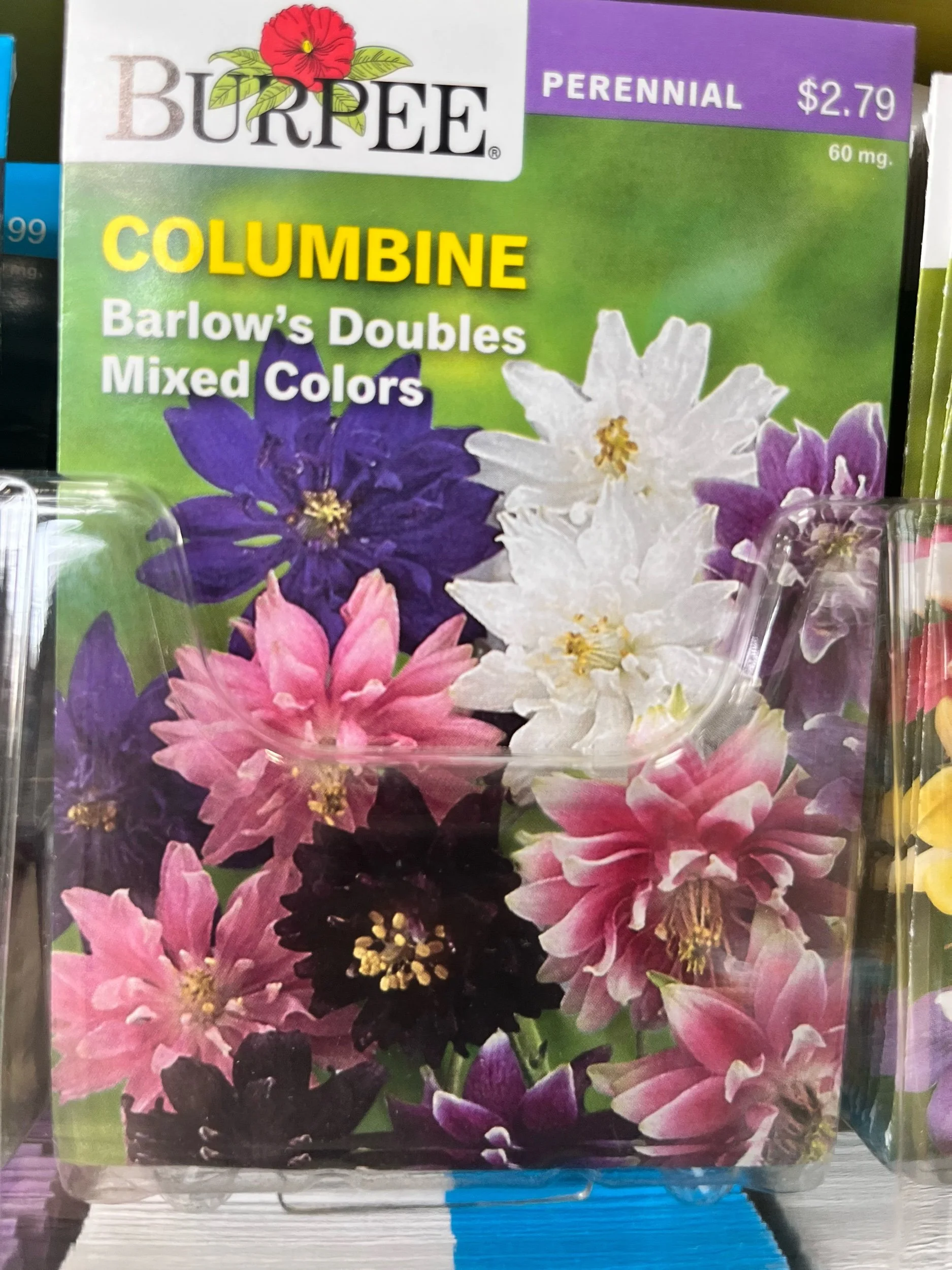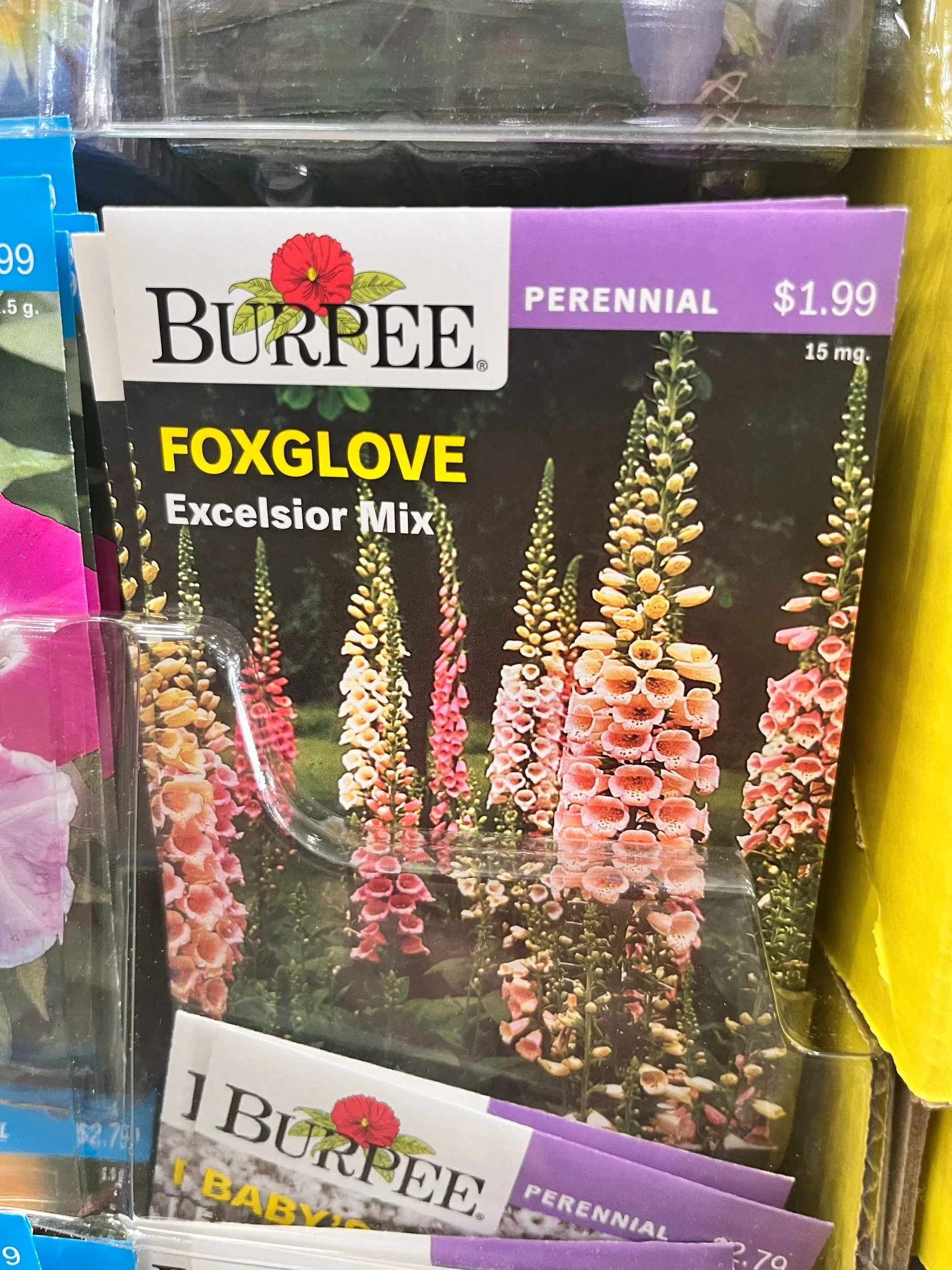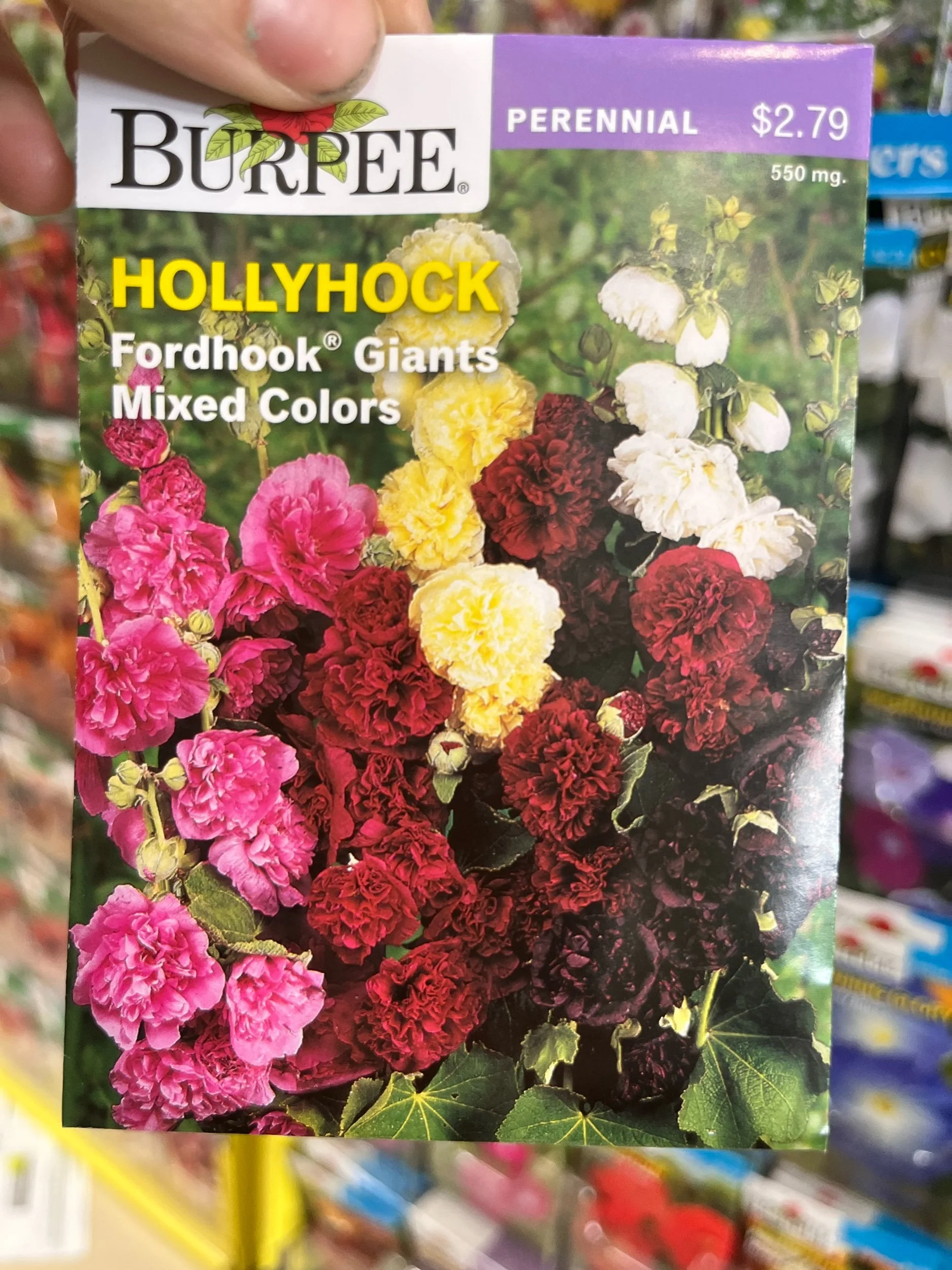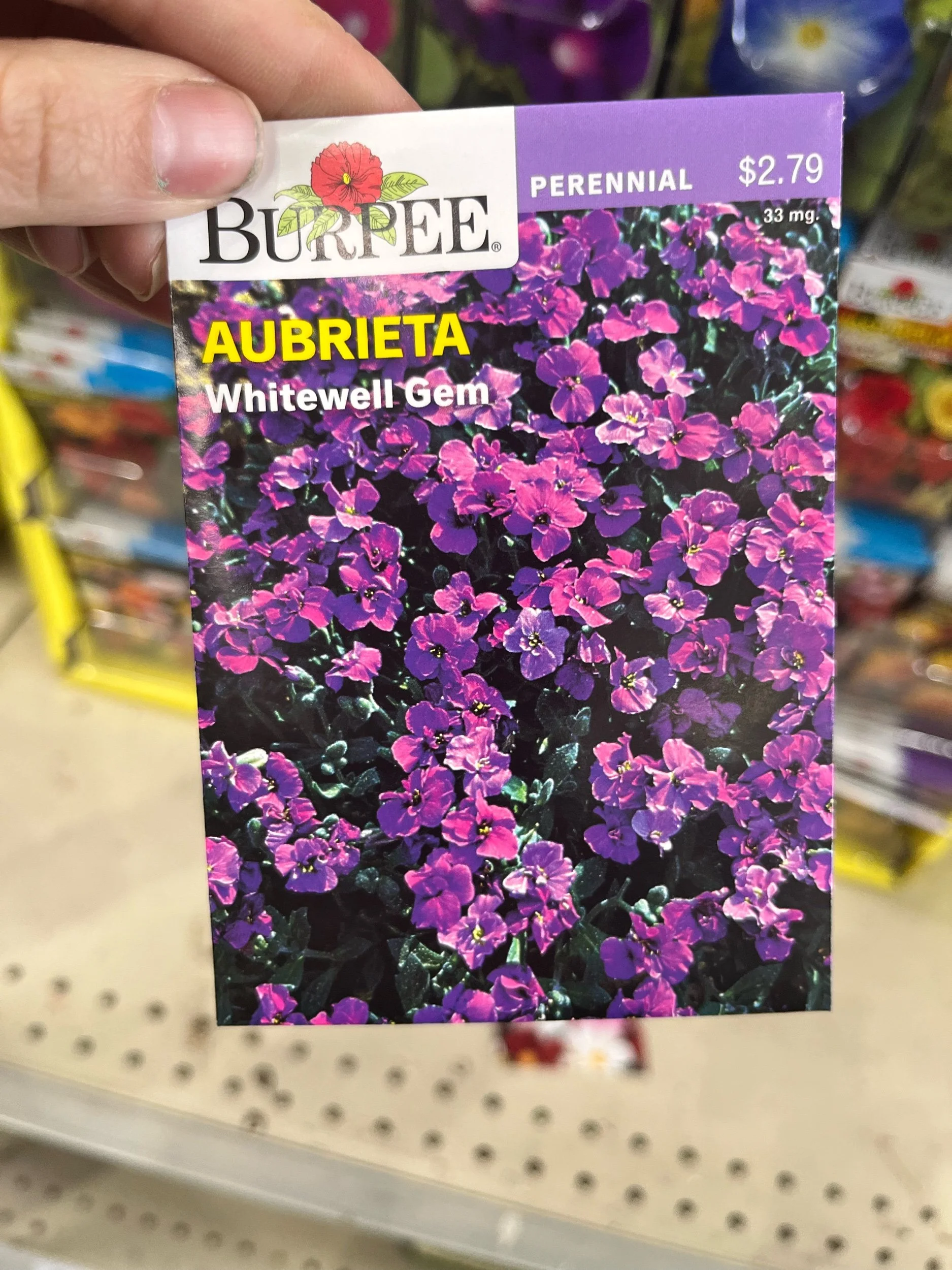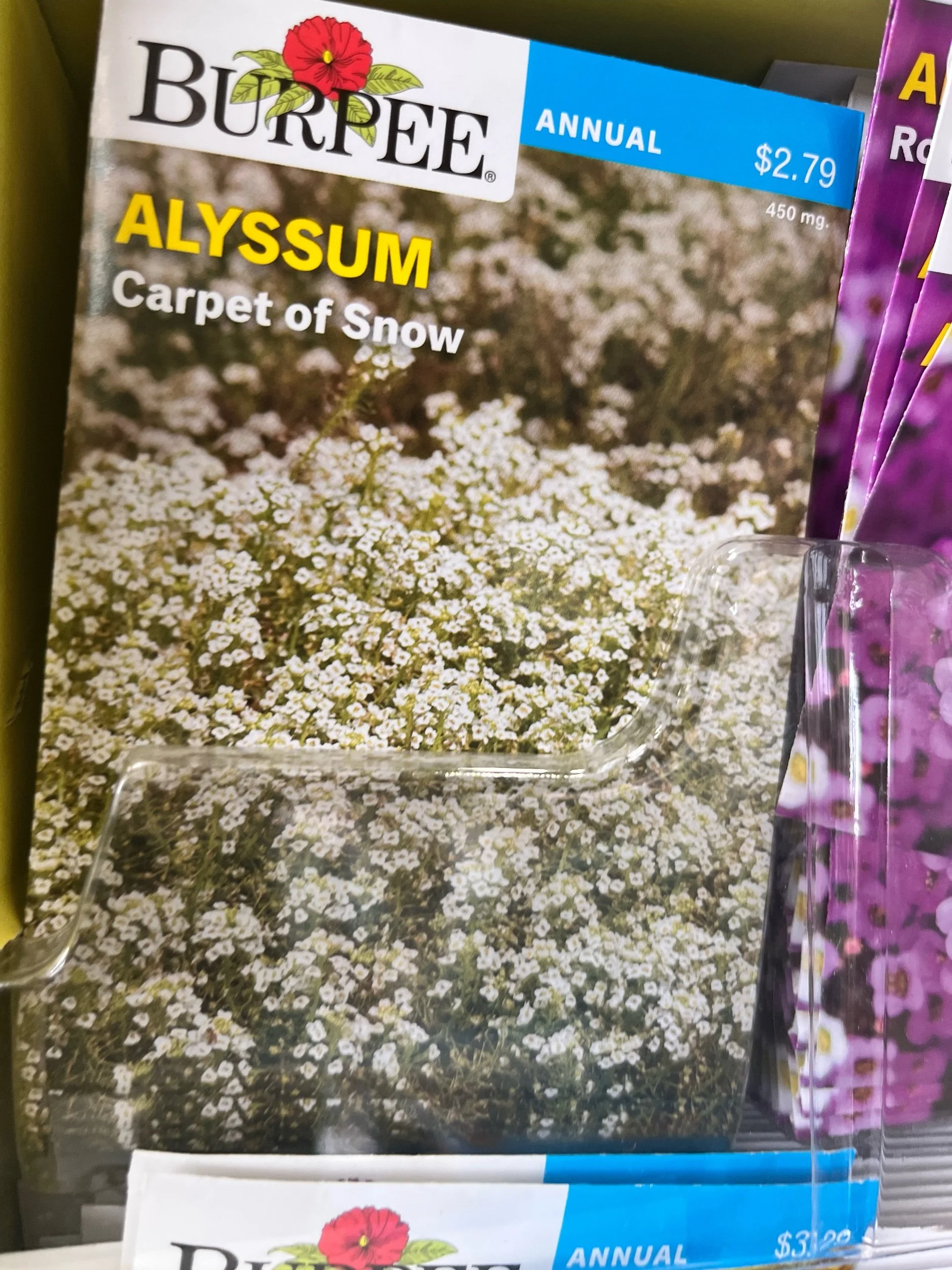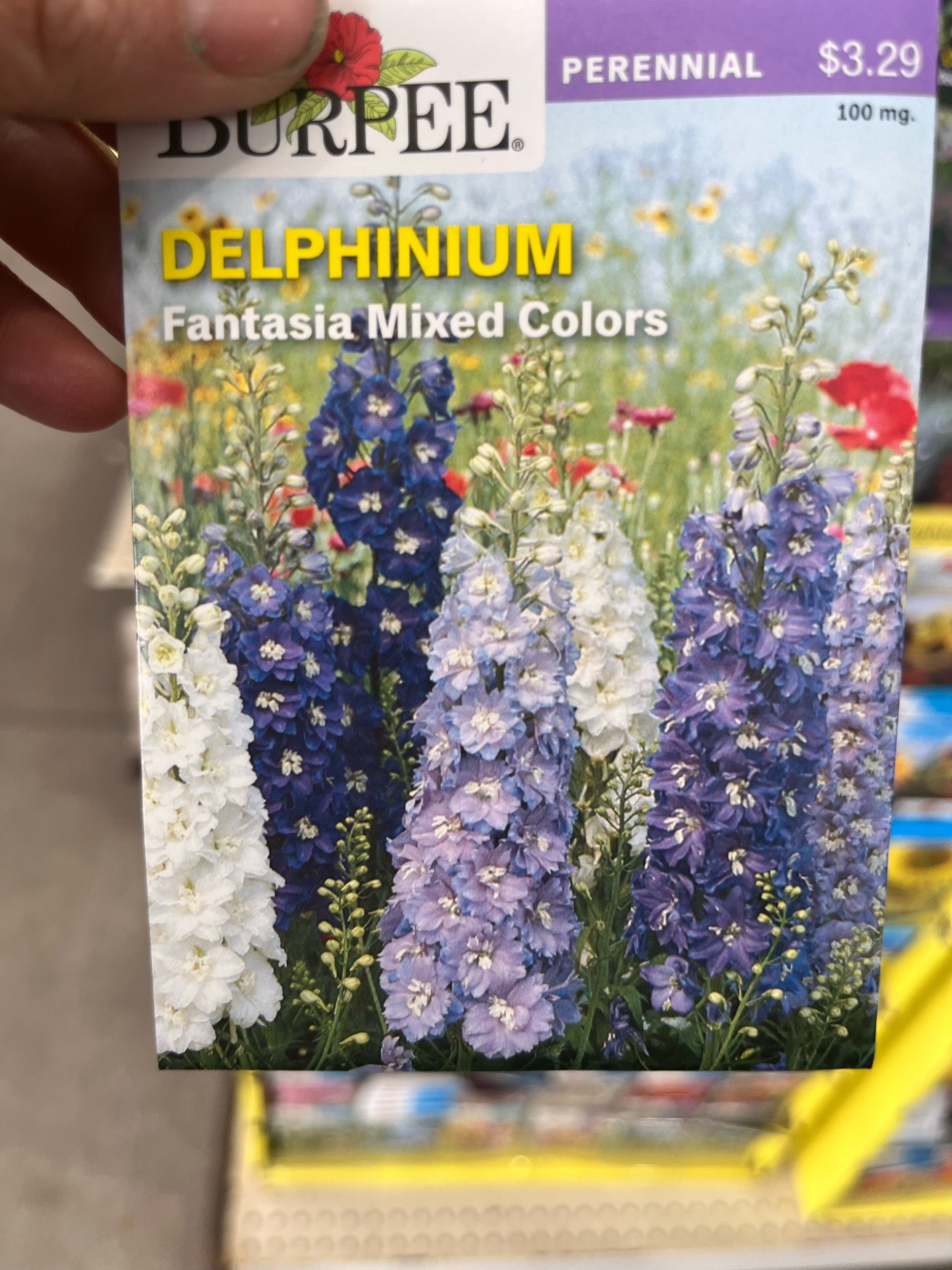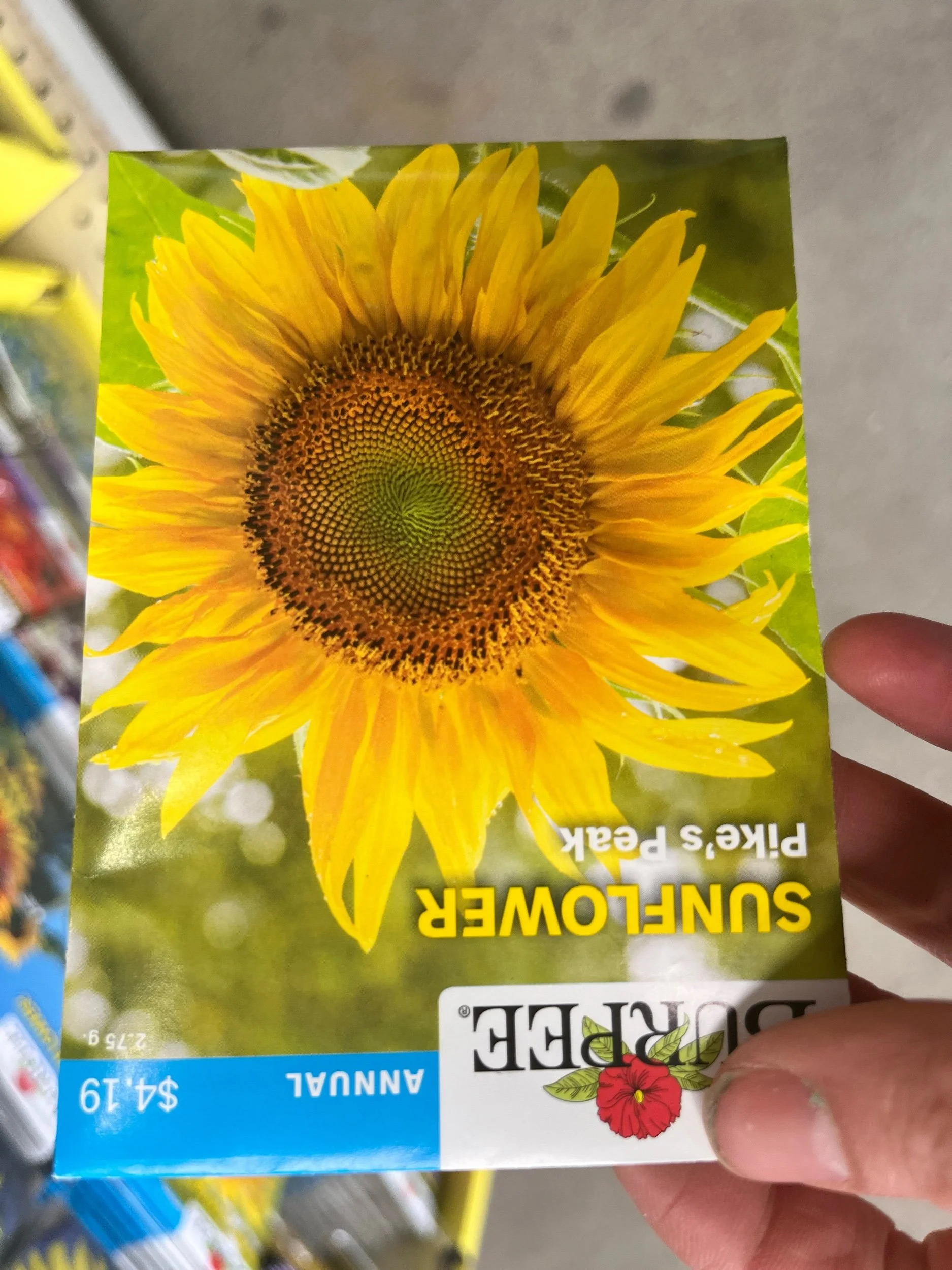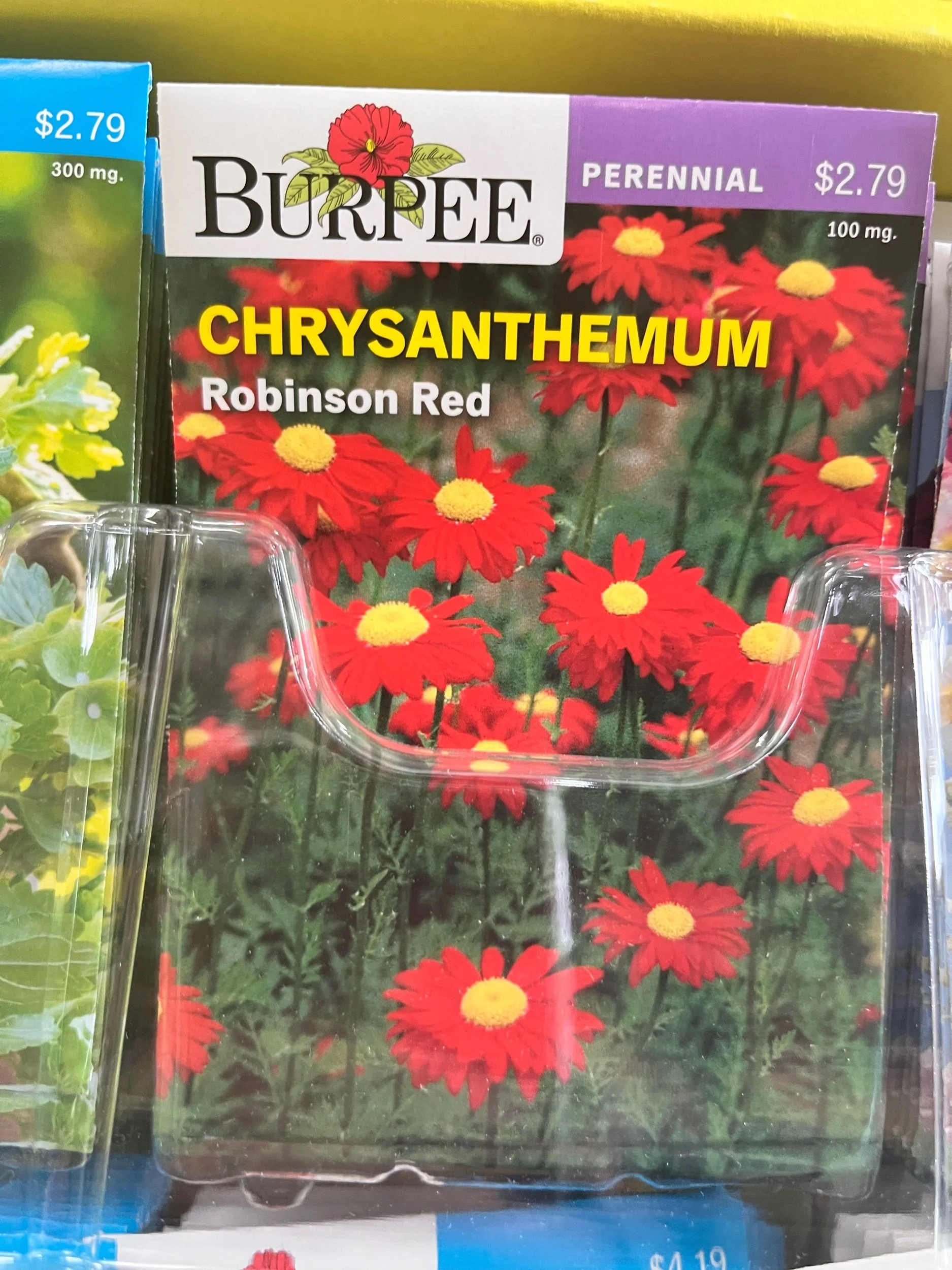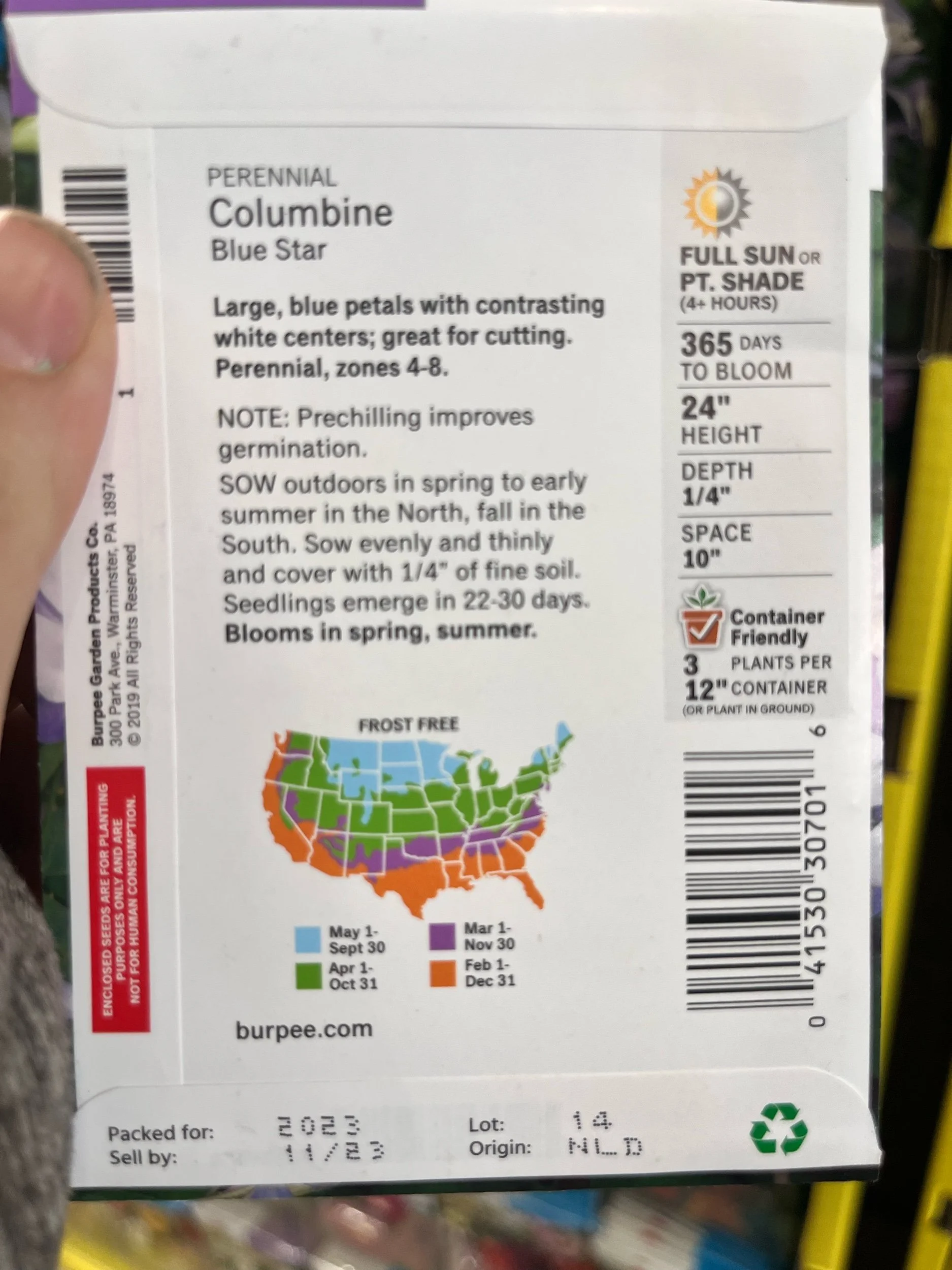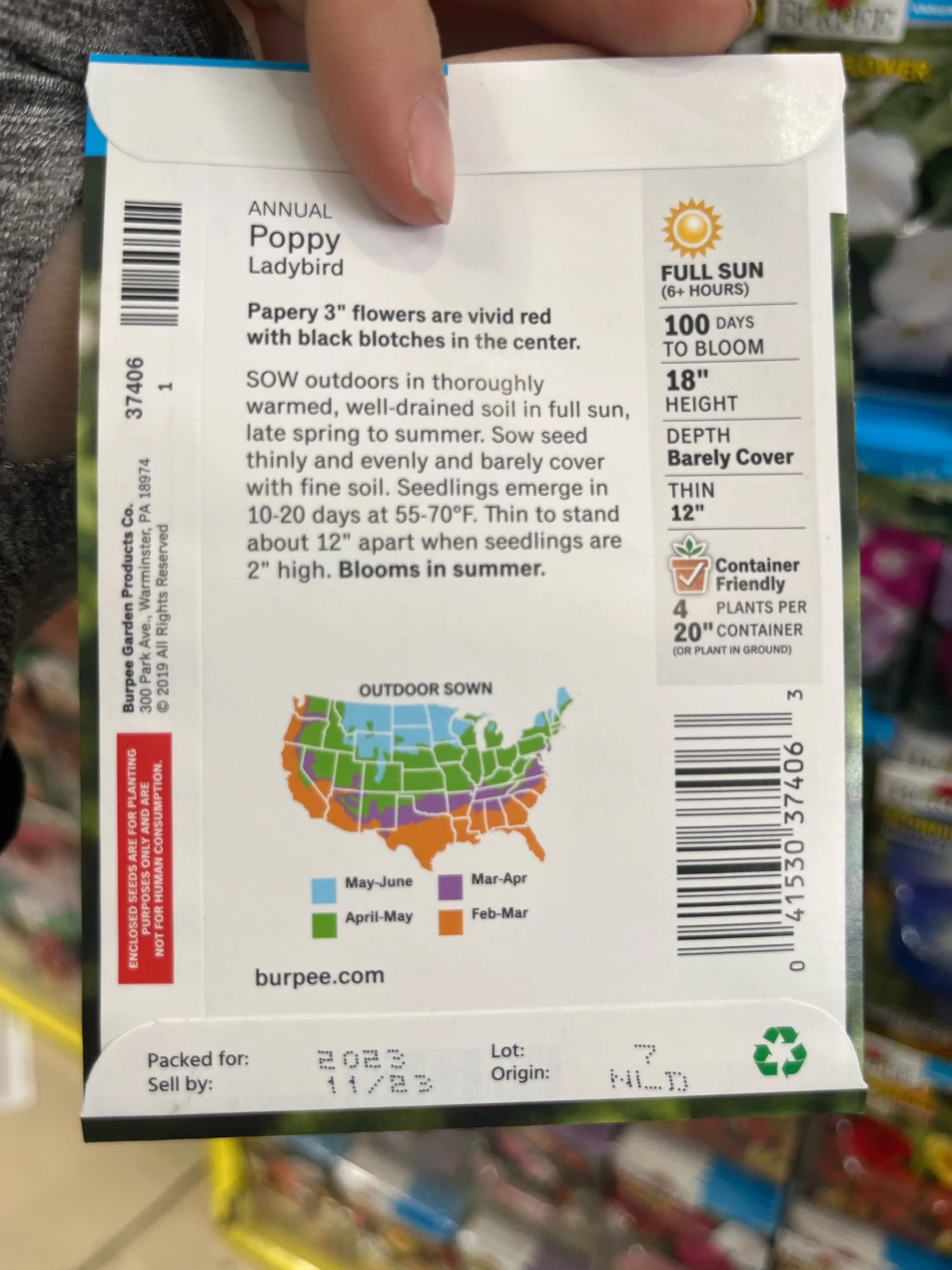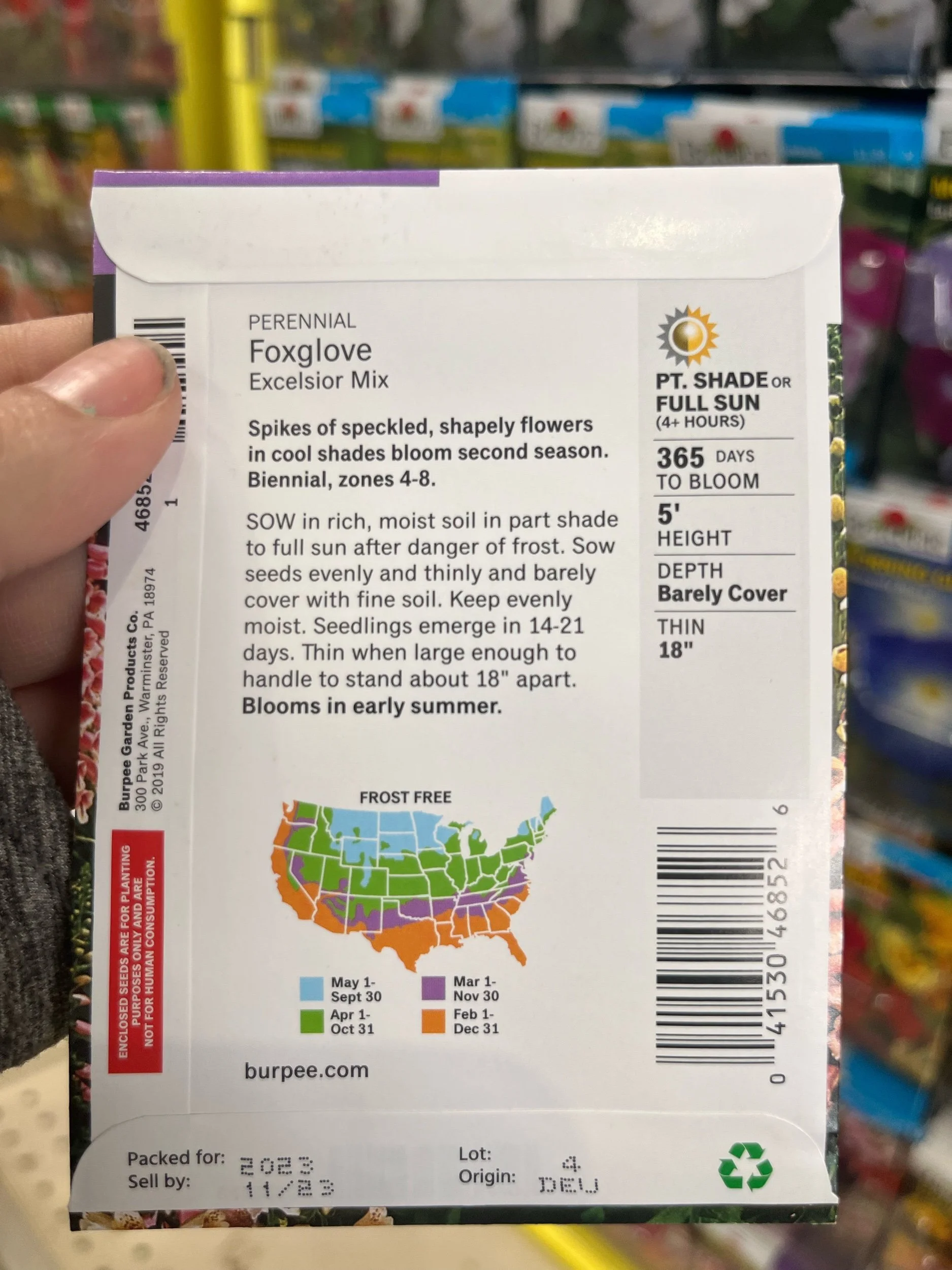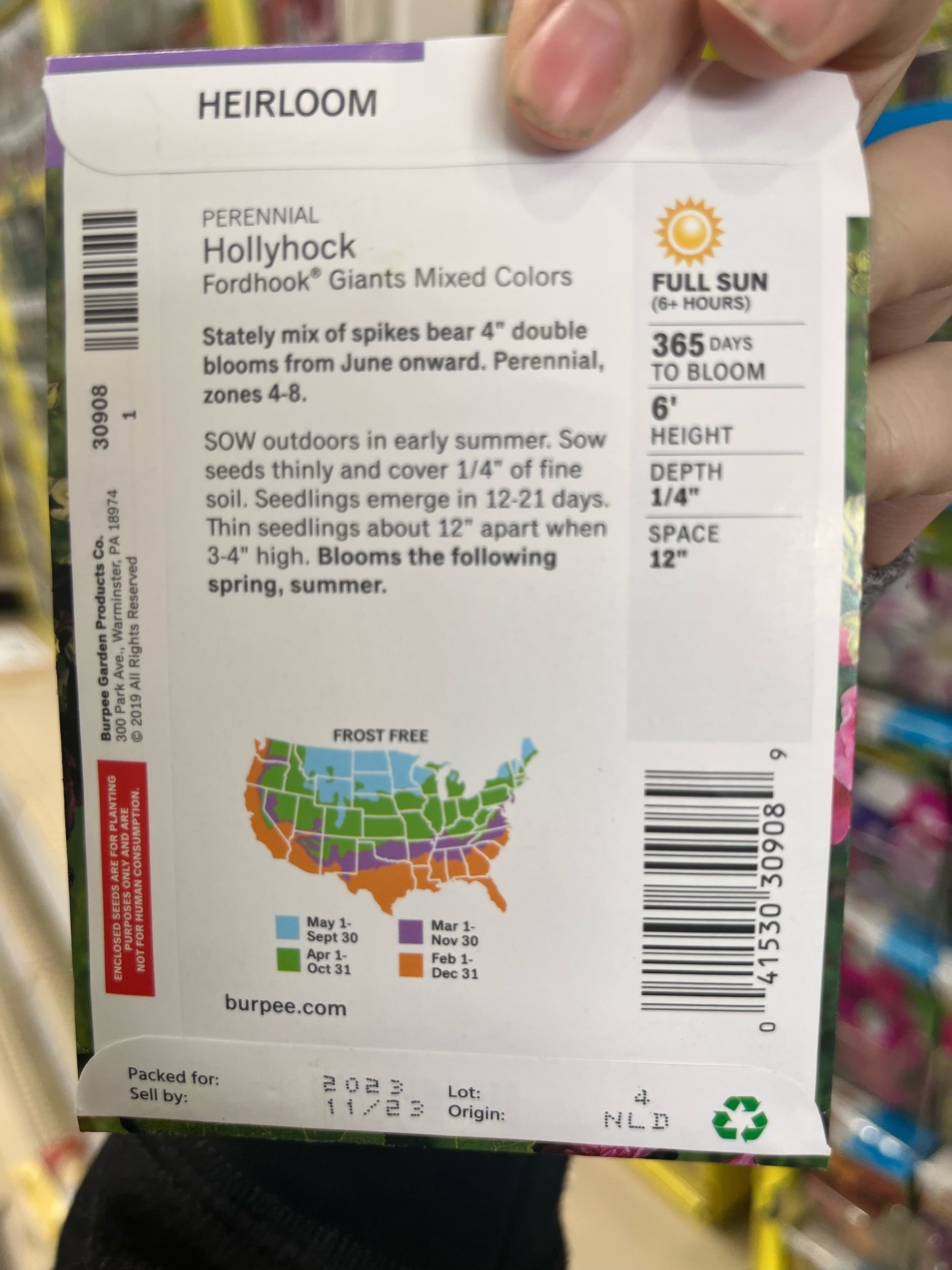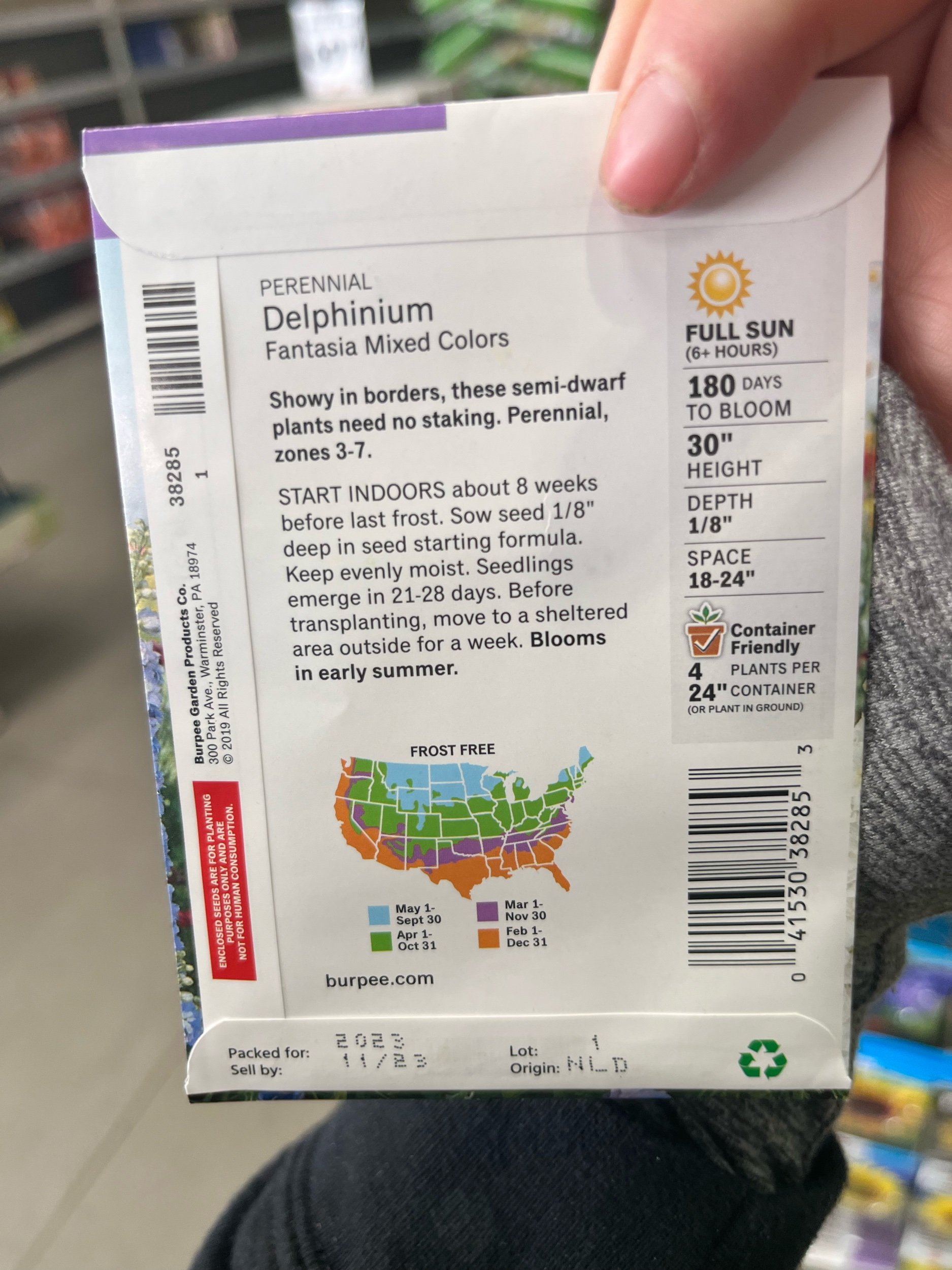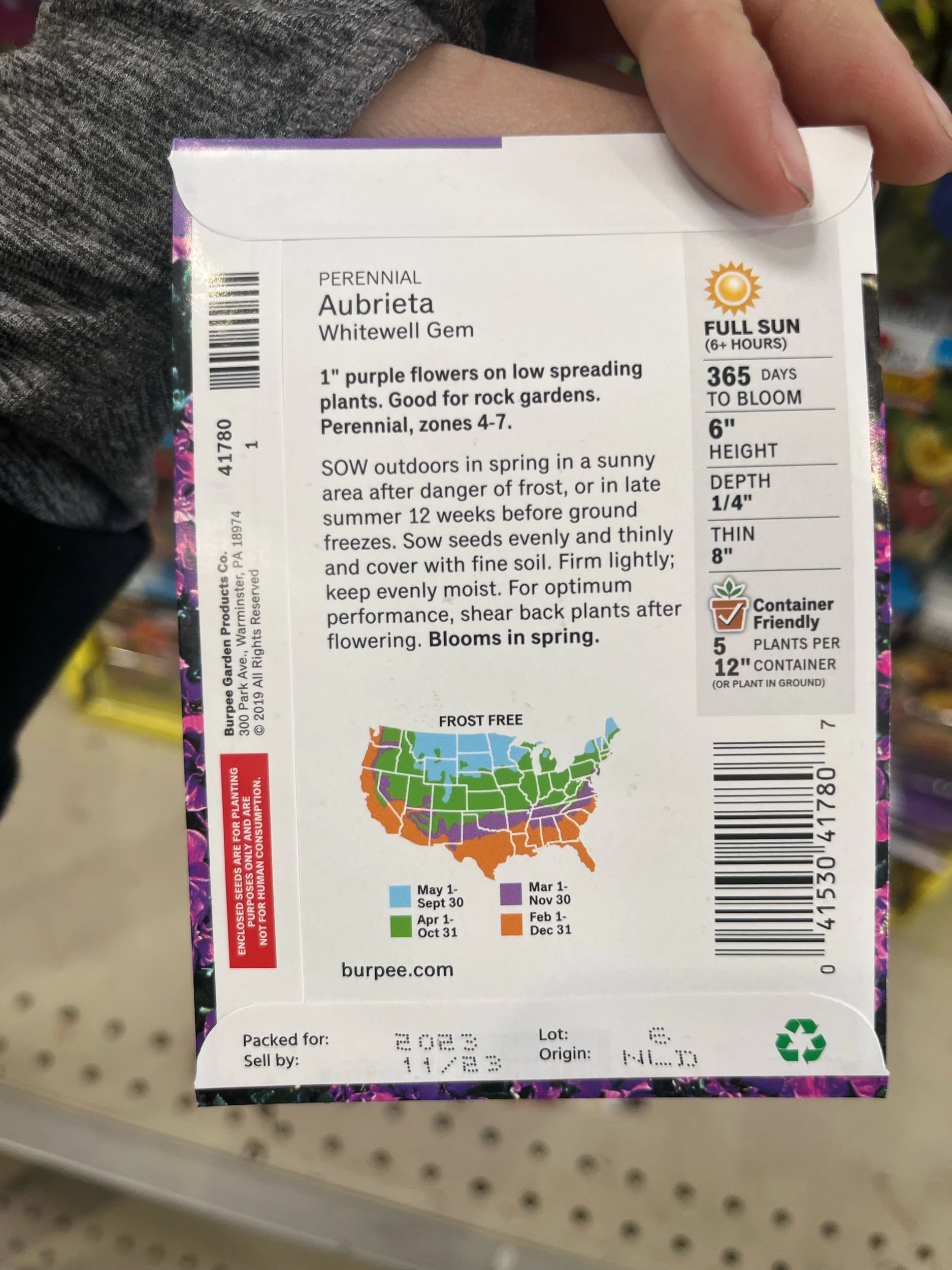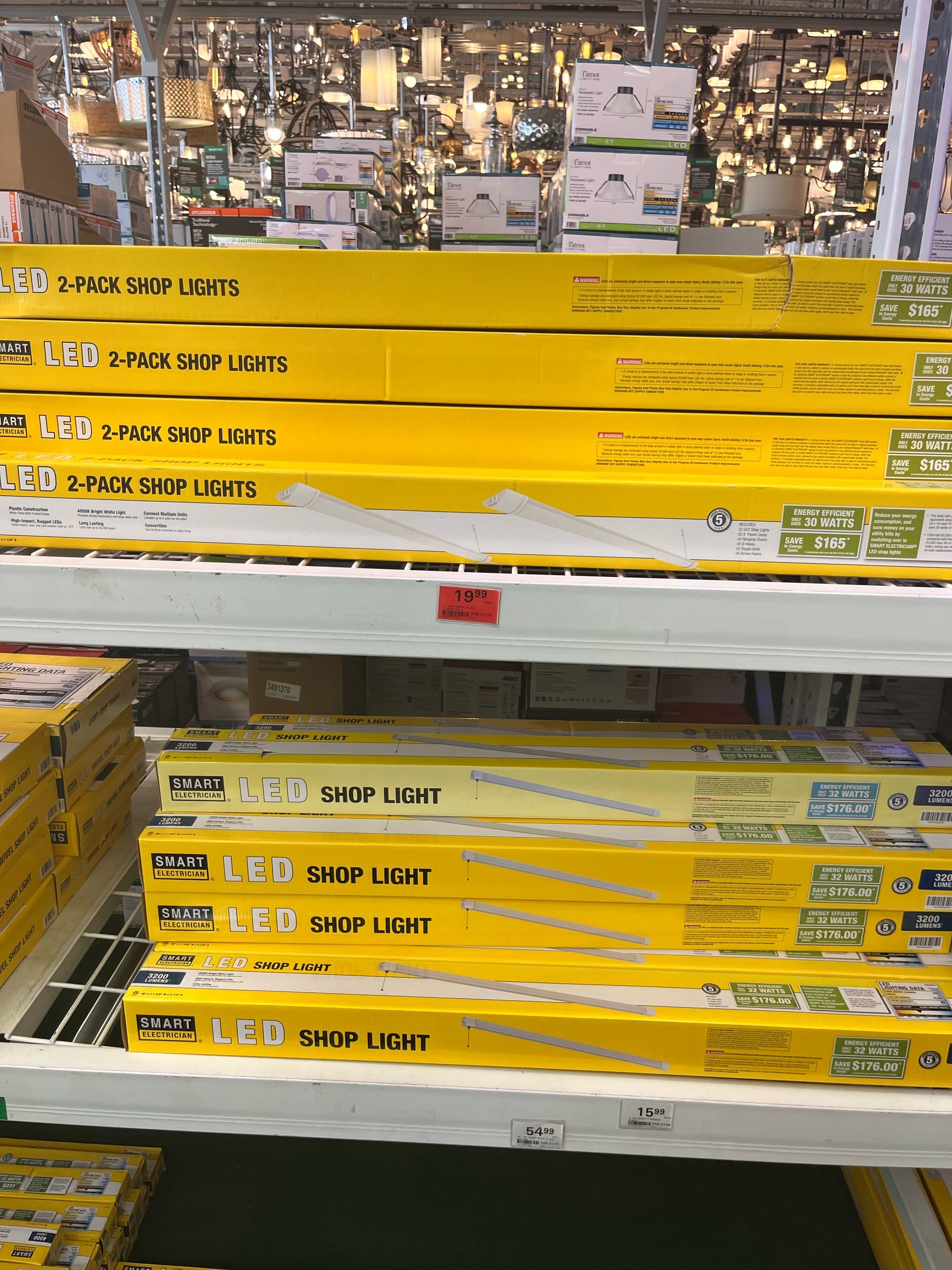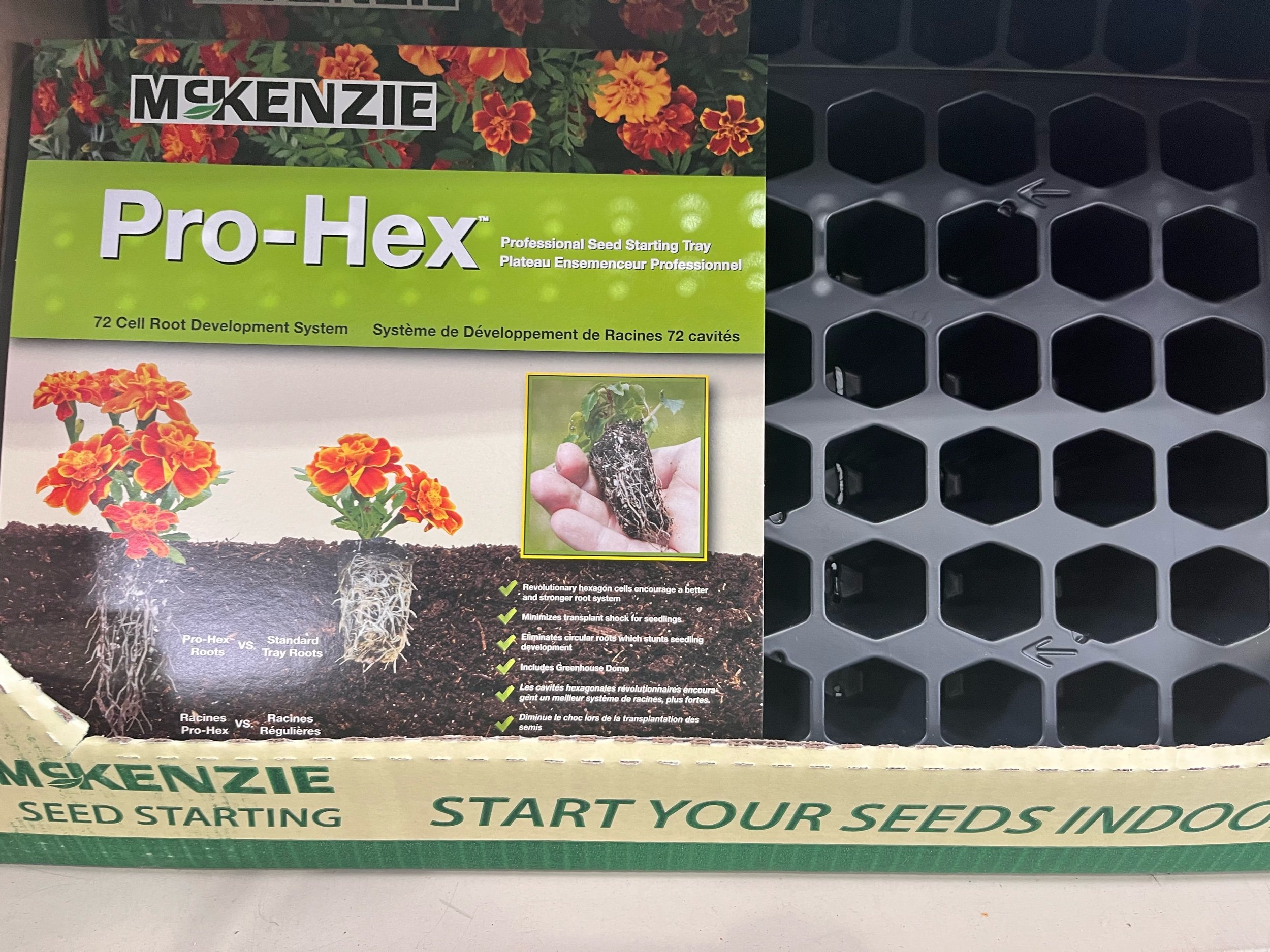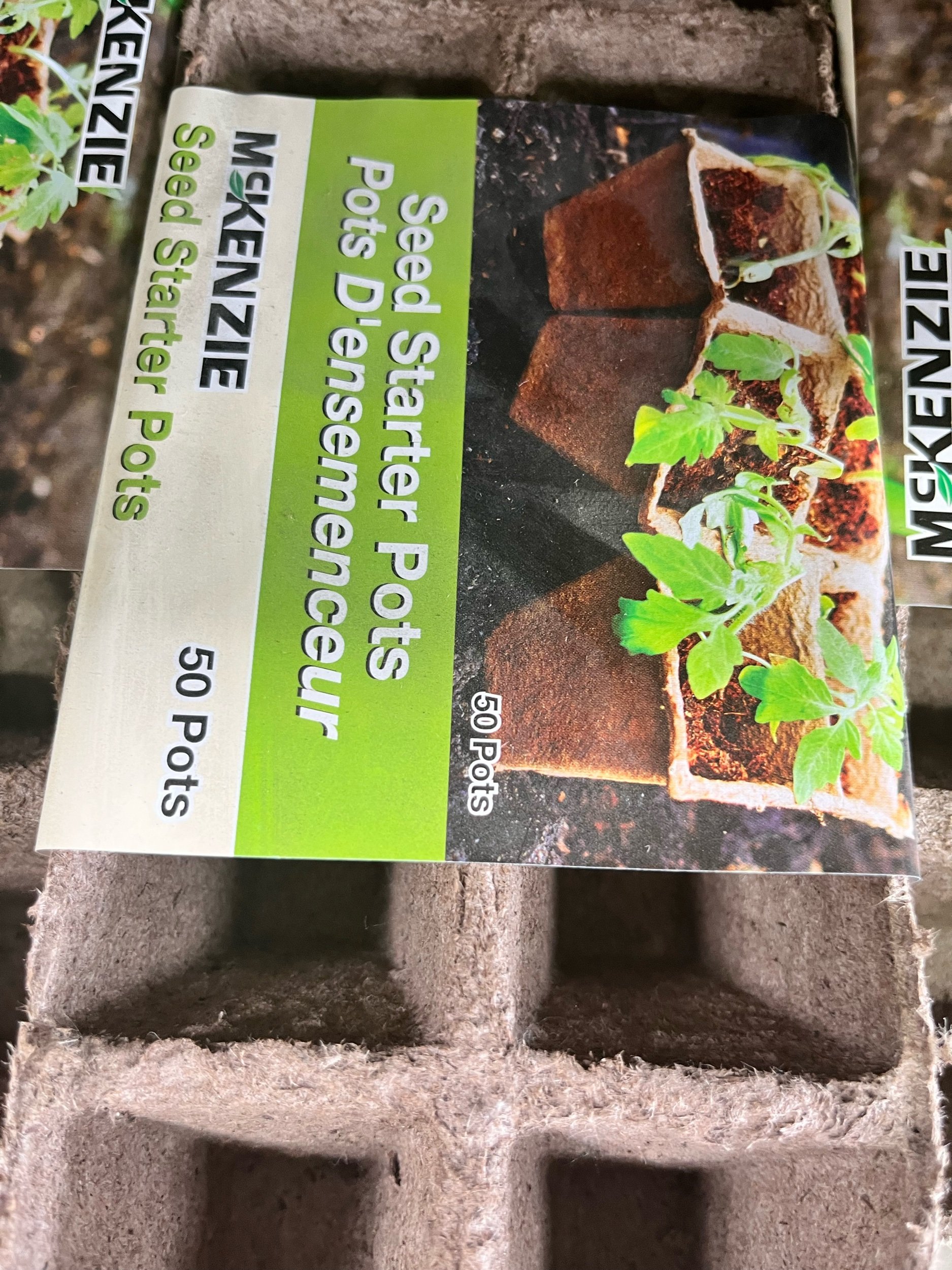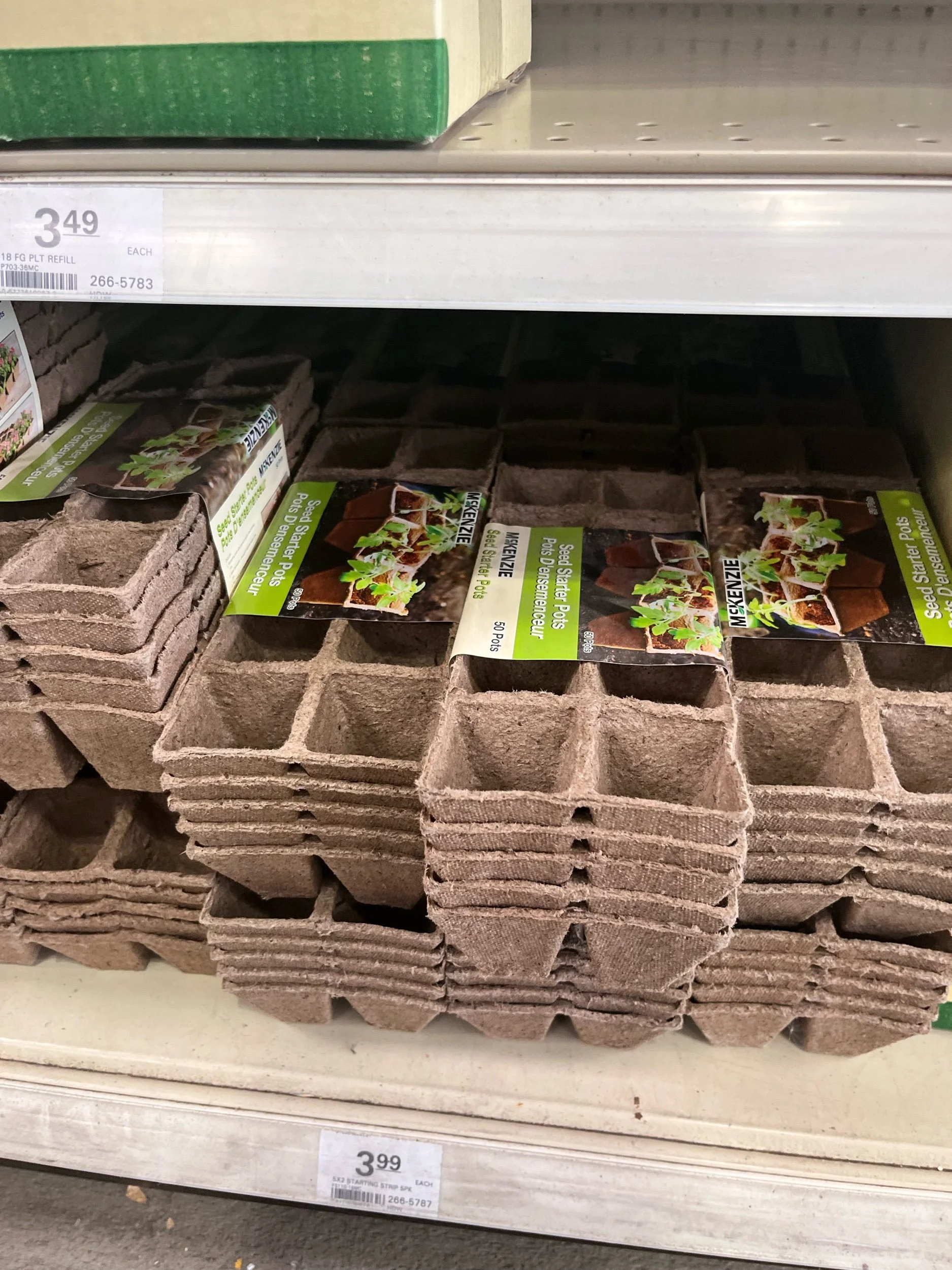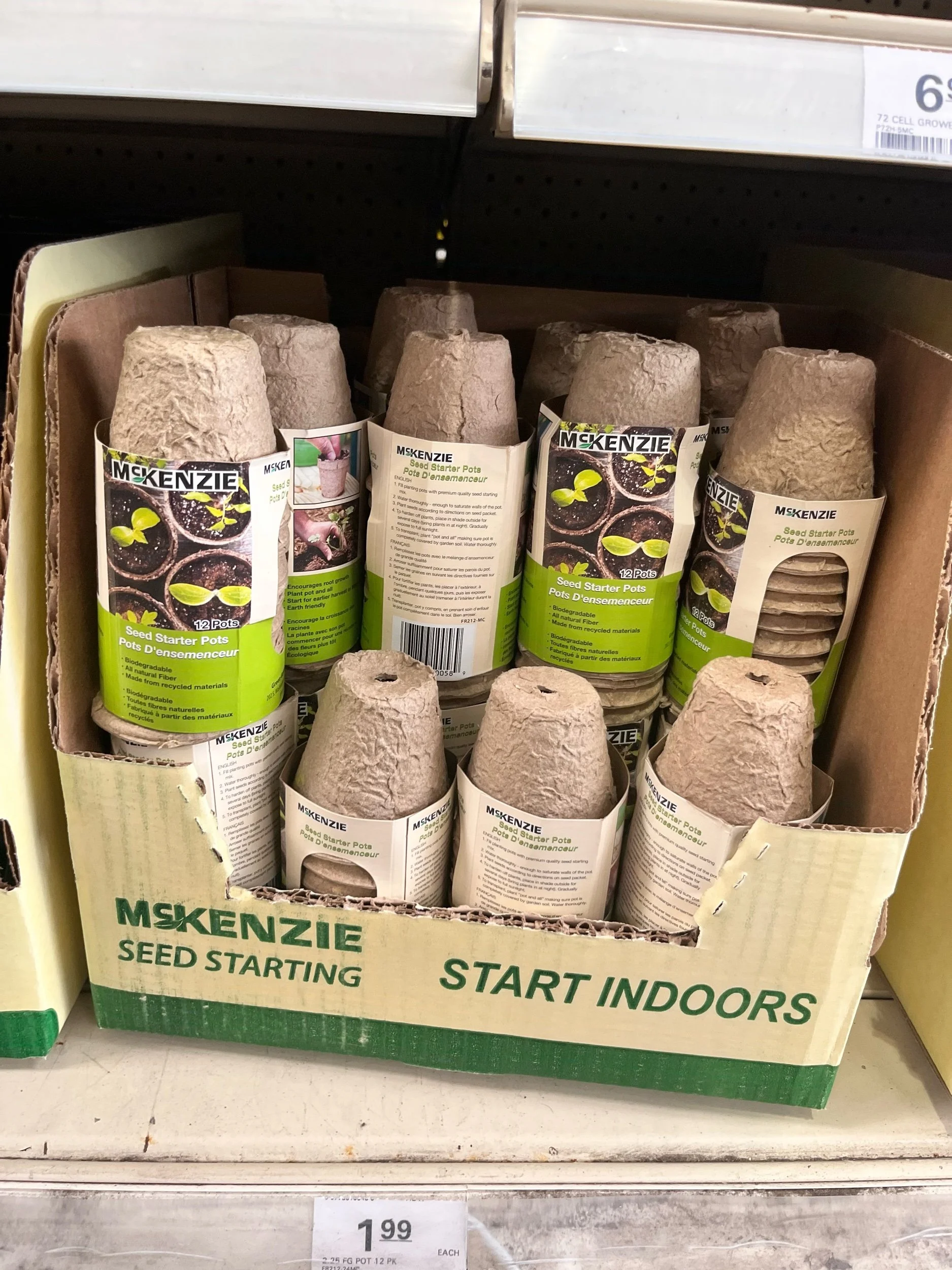This Not That: Seed Starting Edition.
One glance at a seed starting aisle and its no wonder starting a cut flower garden can be overwhelming. There are so many choices and many of them are stetting you up for failure. This quick This Not That guide will help you reach for the right plants to grow your own cut flower patch.
This!
Look for zinnias, cosmos, marigold, amaranth, tithonia, and procut sunflowers to start! You can add in some basil, sage, and bells of Ireland for foliage. These flower seeds are commonly found in garden aisle and provide a great introduction to cut flowers. They can be started inside or directly seeded, they are quick growing, and provide plenty of tall cut blooms without a lot of care! I have another blog on deciphering seed packets here!
Not That!
Avoid most poppies, Columbine, floxglove, hollyhock, aubrietia, alyssum, delphinium, chrysanthemum, branching sunflowers, and mammoth sunflowers. Although pretty, a lot of these seeds provide headaches for even seasoned growers. A lot of these varieties are biannual and perennials meaning they will not bloom until a year after they are planted! A quick look at the back of the seed packet will tell you that. Others like poppies are more challenging to germinate and transplant. Mammoth, branching, and extra tall sunflowers are beautiful and easy to grow but are often to large for cut flowers. A good cut flower sunflower is 3-5 feet tall with one pollenless bloom.
This!
Aim for containers that you can put your own soil in. I like soil blocking but plastic 72 cell trays work well too if you don’t have soil blocking tools. A regular potting or seed starting mix is good to work with. These mixes maintain moisture with out staying water logged and have the nutrients required for seed to start. Shop lights work well to grow plants underneath as well.
Not That!
Avoid containers dry out easily or are planted in the grown with your plants. Pellet seed starters and compost pots dry out rapidly and can constrict roots when planted in the ground with plants. Grow light are also not necessary for seed starting. As for a planting medium, avoid strait compost, peat most, topsoil, and raised bed mixes. These mediums often hold too much water for seed starting and don’t contain the right or enough nutrients to start your seeds out right. I have a whole blog on seed starting lighting and tips found here!

